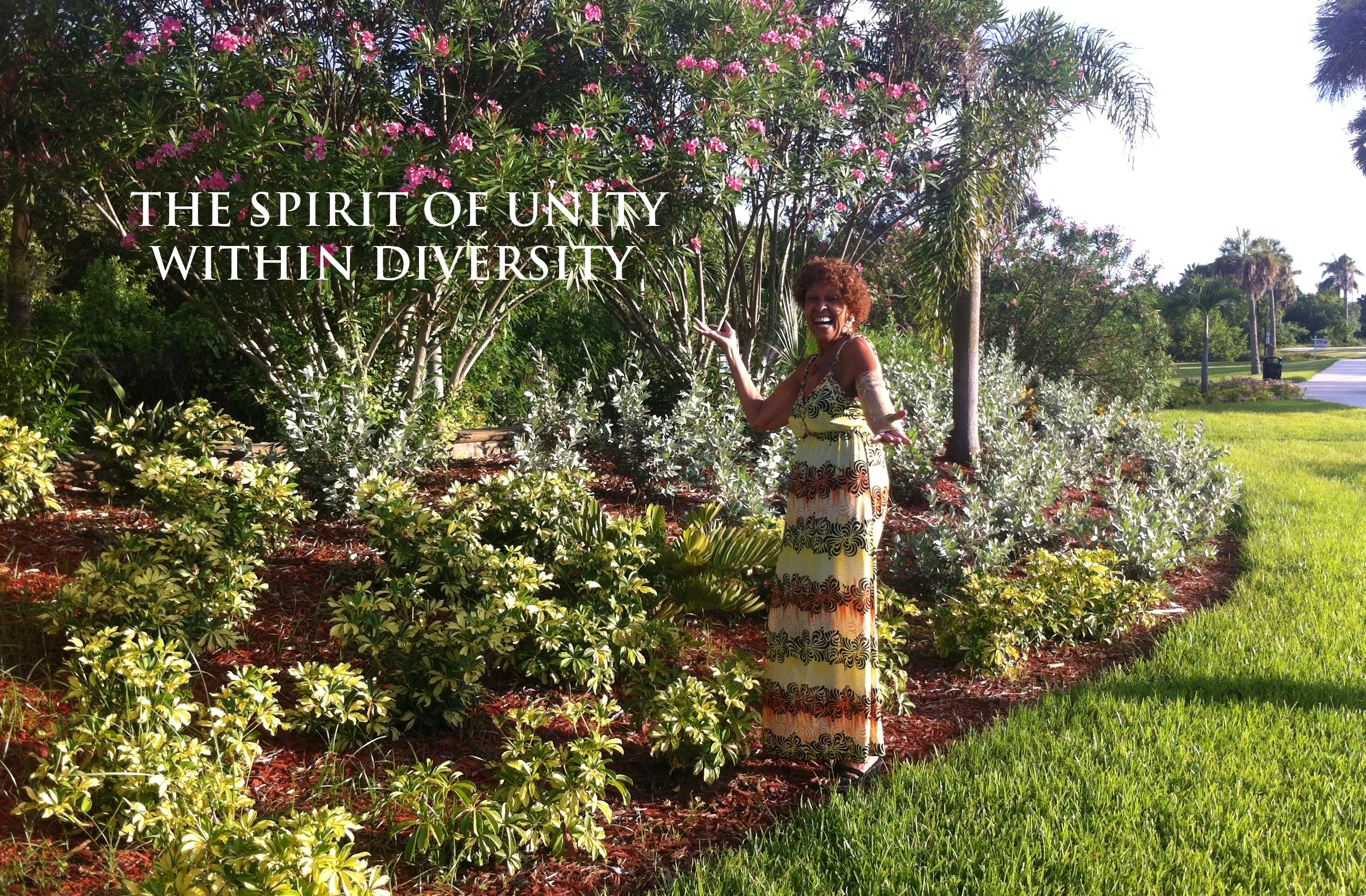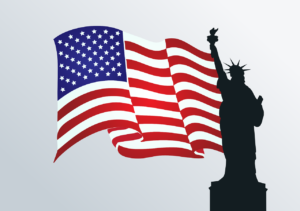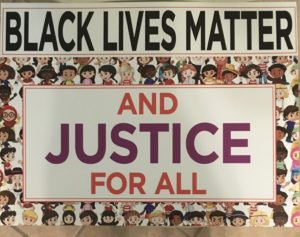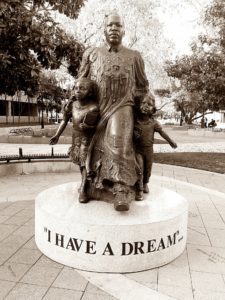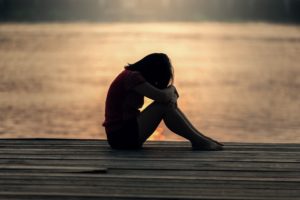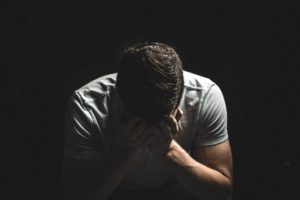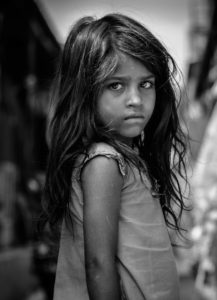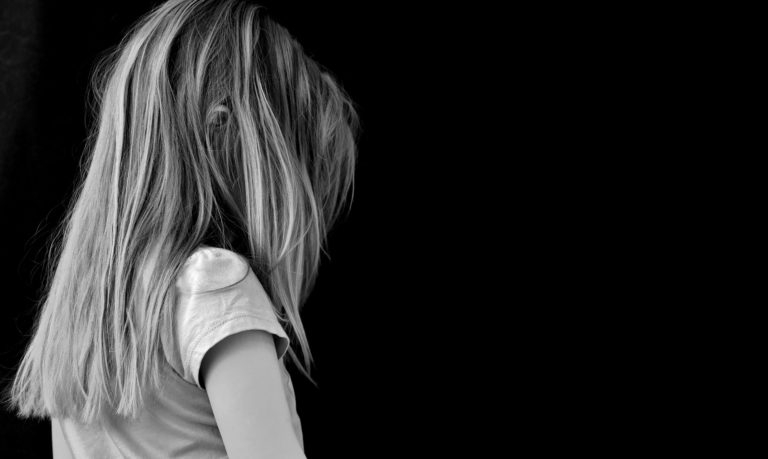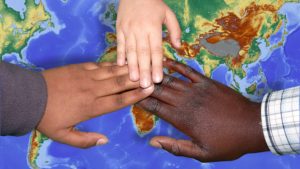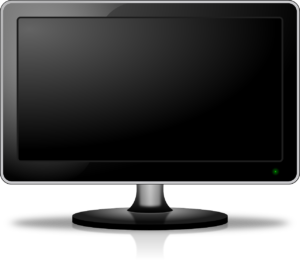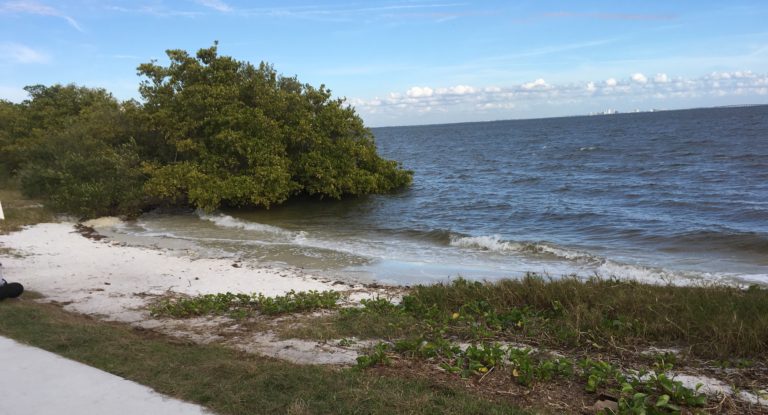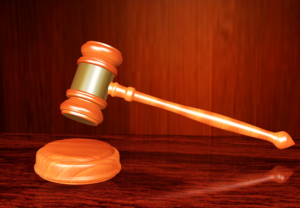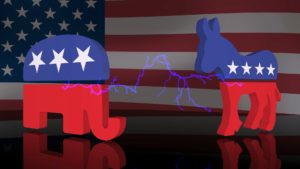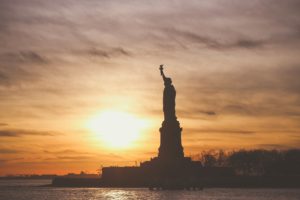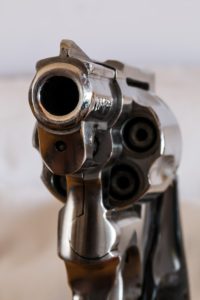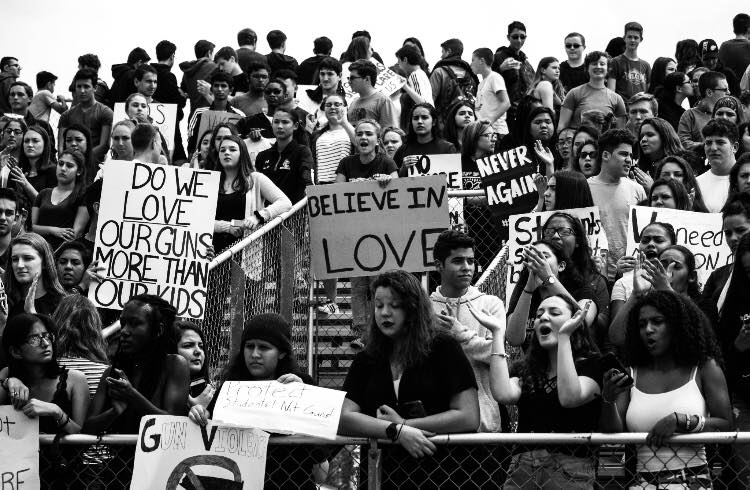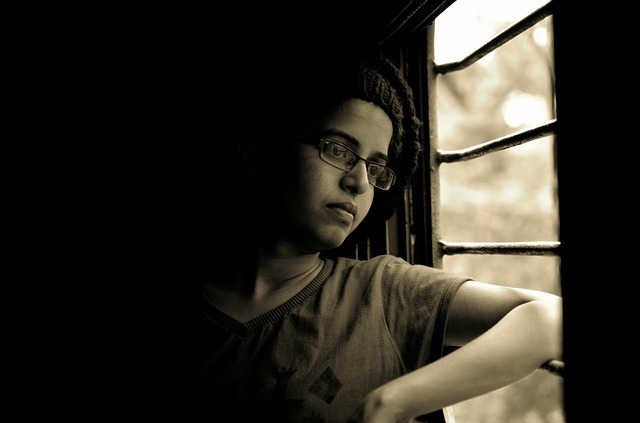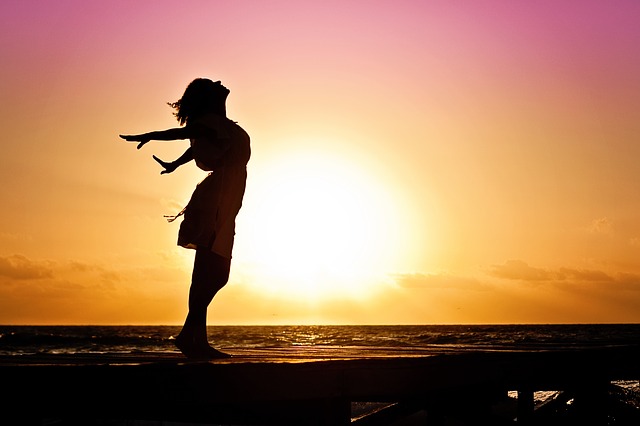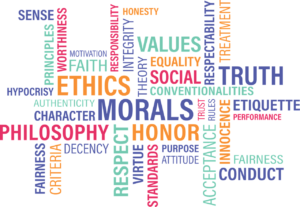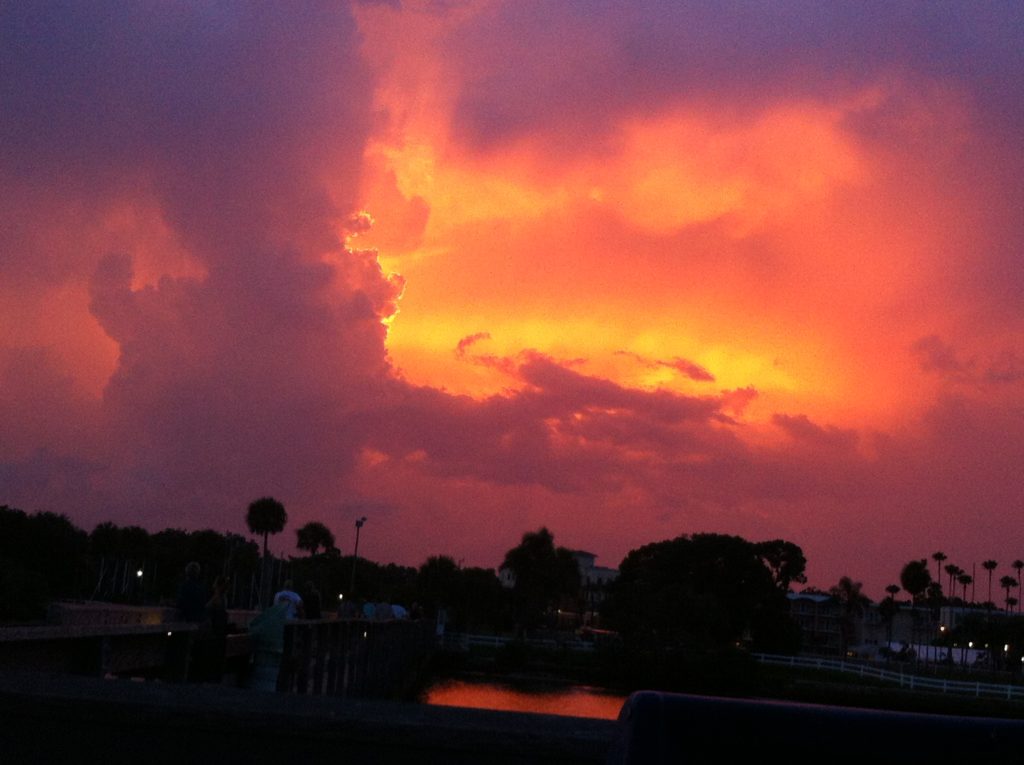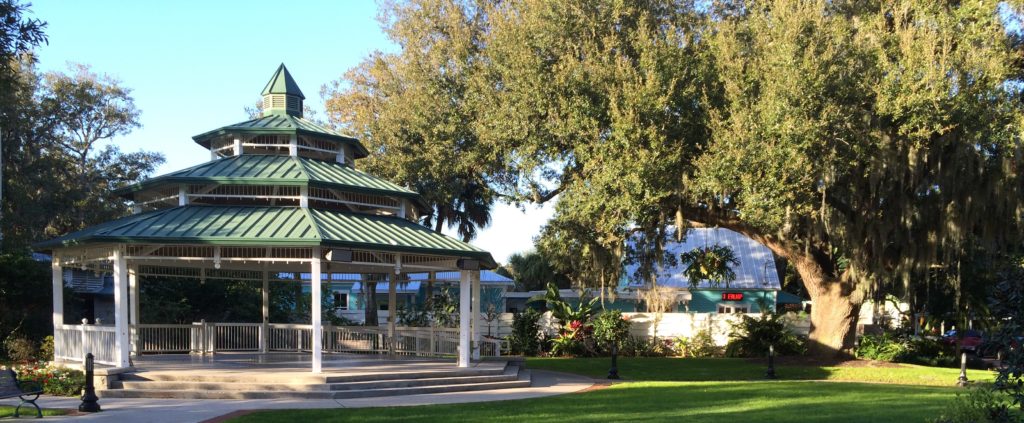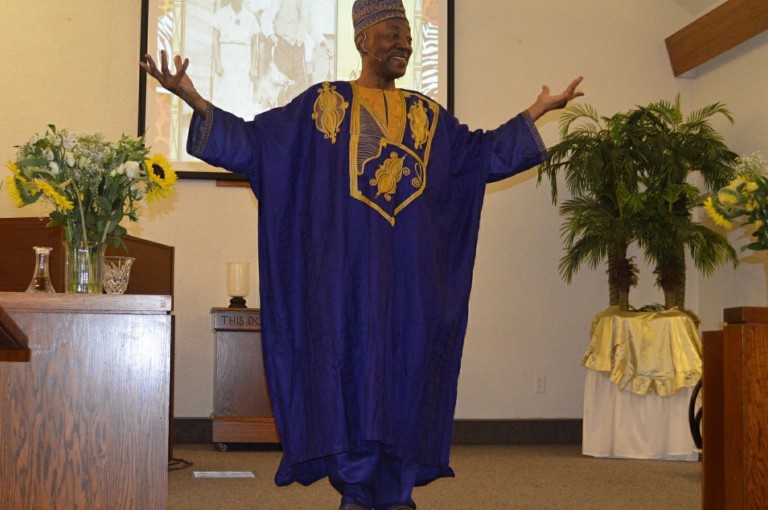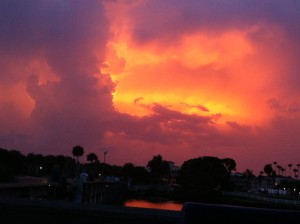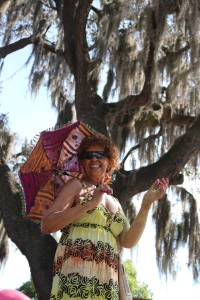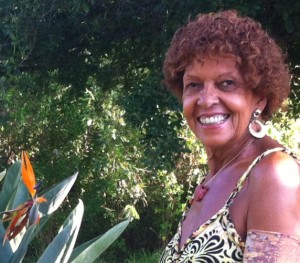A Gun in the Wrong Hands
I led the way, my friend, Jill, trailing behind me, as we breached the sanctity of my parents’ bedroom. Tiptoeing to the bed, I pulled back the spread, then removed the pillow, proudly displaying a silver-trimmed revolver. Jill rushed over, arms outstretched, and grasped the gun in her small hand. “Nooooo,” I screamed.
A gun in the wrong hands . . .
This hadn’t gone as planned. I merely intended to show off the gun, that very much resembled the one the Lone Ranger carried. To me, guns were for make-believe; for playing Cowboys and Indians. The only toy gun I was ever allowed to have was a water pistol, which didn’t look like a real gun. Cap guns were off limits, so I played cowboy with my fist and pointer finger as my only firearm.
My father was an attendance officer in New York City. Working in potentially dangerous neighborhoods, he had a license to carry. I was a well-behaved, obedient child. It never crossed my father’s mind that I would do such a reckless thing; hence the gun was not under lock and key.
Both of my parents worked, and my grandmother, who lived with us, was a stay-at-home Gram. But she died suddenly, and I became a “latchkey kid,” plastic woven lanyard around my neck with a housekey dangling at the end in plain sight. Before my parents returned home from work, I was allowed to have one friend at-a-time, in the house. And it couldn’t be a boy. By nature, I wasn’t a sneaky little kid, so the events of that day could not have been predicted.
What kind of scenario could have followed my recklessness? Upon retuning from work, could my parents have found their daughter, or the neighbor’s child, dead on the bedroom floor? How many other little kids have gotten their hands on guns? And what has been the outcome?
I am reminded of the recent event in which a six-year-old brought a gun to school. Despite a forewarning, he was not allowed to be searched, and eventually he shot his teacher.
William Electric Black, Emmy award winning writer for Sesame Street, has developed a program of music and rhyme to teach children as young as four the seriousness of guns, and the importance of staying away from them. Any gun that kills a child is a gun in the wrong hands.
“Noooo!” I screamed. Jill dropped the gun on the bed. Trembling, I concealed it once again with the pillow, and put the bedspread back in place. We ran out of the room, down the stairs, and into the backyard. The incident was never spoken of again.
A gun in the wrong hands . . .
By the grace of God, I lived to tell the story decades later.
*******
Embracing Uncertainty
I grew up in an era of certainty. Graduate from high school, and college (if affordable), get a good job, get married, have kids, relax into retirement, and live happily ever after. With the exception of heart attack, cancer or stroke, which we didn’t plan, but were not unheard of, we pretty much controlled our own destiny.
Enter Covid-19, an outside enemy who didn’t care about our plans; and who struck without warning, sparing no cultural group and ultimately, no age group. At any moment, we could breathe in the little covid monsters, end up on a ventilator, and perhaps die without warning.
We listened to the experts, wore masks, stayed away from crowds, stopped traveling, and the only restaurants we frequented had outdoor seating. We followed the experts who, themselves were caught up in a learning curve, so their advice shifted from time to time. All this added up to something we were unprepared for: uncertainty.
Can we attend family weddings? Is it safe to go to Grandpa’s funeral? Is it even okay to hug and kiss our nieces and nephews?
We vaccinate to save our lives, and the lives of our loved ones, but how safe are we with breakthroughs overriding vaccinations, not to mention new strains? As the pandemic has lingered, I notice that Zoom visits with friends have shifted. What used to be an interchange of the good things in our lives, now focuses on long drawn-out descriptions of physical complaints, followed by the doom of covid or politics.
This level of uncertainty is new, but many of us are descendants of people who lived through, and survived uncertainty, be it the slave ships, the Holocaust, or abject poverty in their homelands that they fled.
I’ve made a choice not to obsess about uncertainty. My first prayer for the day, is:
“God, give me something for which to be joyful today.”
Then I make it my business to go looking for that something throughout the day. I’ve limited my daily news watching to one half hour, enough to keep me informed, but not enough to feed agitation and hopelessness. And I’ve switched away from the cable news programs that focus more on editorial commentary. My local channel gives me the facts, and I form my own commentary.
I make sure to go outside every day. Luckily, living in in a warm locale with enough open space, I have plenty of safe unmasked time. I have found socially distancing exercise classes, keeping my endorphins flowing, along with much-needed human contact within the six-foot boundaries of safety.
In the past, I was always one for planning ahead, for setting goals, and striving. I may not be able to predict the future, but if I live fully in the present day, I can move more confidently in the changing world around me. My mantra:
“I am open and receptive for all that I need to know today.”
I’m delving into the calming effects of Yoga breath work, and neuroscience techniques of bringing calmness to the brain.
I wrap myself in the comfort of the familiar, as I find stability in the routines that I now define as rituals: morning prayer/meditation, household chores –nurturing my home; making a ceremony out of mealtime—either in a restaurant or at home; family visits electronically, or in person when possible.
I look back on my ancestors who endured uncertainty, and call forth the strength in my DNA, embracing uncertainty with hope.
*******
Vaccination Conversation
I was sinking into the security of being unmasked in the supermarket, restaurants, and well-ventilated clothing stores. Fully vaccinated, I felt safe with this new level of freedom; another step forward into normalcy. Then came the halting words: Delta variant, breakthrough infection. Here we go again: one step forward, two steps back. We’ve passed the year-and-a-half mark with this accursed virus, but we’re still being jostled back and forth between hope and uncertainty; between renewed control over our lives and being pawns of fate.
“Follow the science.” It seems like such a reasonable mantra. Wear your mask in crowds, get vaccinated, you’ll no longer be a host for the virus to cling to. Reach herd immunity. Why is this so difficult to grasp?
When did the American mindset shift wherein sickness is no longer confined to medical professionals, but to the dictates of political agendas? Throughout my life, there have been vaccination mandates to protect public health. Recently I came across my daughter’s immunization record from years ago. It listed five shots required for her to start the school year. The goal? Not only to protect herself, but to protect all her classmates. No parents lashed out at the school system for infringing on their constitutional rights, or their rights for privacy and free choice. We wanted to keep our kids safe and healthy—end of story.
Although I think of vaccination as a health issue only, I am aware that I have friends who have politicized the topic, and have remained unvaccinated. These friends are not vitriolic radicals, rather they are intelligent, kind, unselfish people. I would love to gain an understanding of why we hold such different views. But in the strange national climate in which we now live, speaking freely about differences rarely occurs among friends, for fear of destroying the relationship. Thankfully, the opportunity did arise, but it was from a stranger.
This past week, a technician came to my home to fix a mechanical problem. Idle chit-chat turned into a twenty-five-minute discourse on vaxing. To date, he has chosen not to be vaccinated. His main concern? Government control. Having emigrated from a Communist country, he views America through that lens, believing that as we start mandating vaccinations, we are morphing into a socialist society with the potential of rolling down the hill to Communism. All this over a vaccination. He went on to tell me that it’s his right to remain unvaccinated, and I, as a vaccinated person could still infect him. If staying at risk and contracting the virus leads to his death, he views that is his right of choice, and Gods will.
Indoors in the confined space of my home, we were both masked. His gaze was steady, unflinching. His voice was not loud or ranting, but calm and rational. He spoke from the heart. Listening to him, I realized that issues of right and wrong are more complex than they seem on the surface, Different life experiences can lead to different decisions.
As we talked, I thought back on the experiences in my own life that drew me to choose vaccination. My gratitude for being a six-year cancer survivor. My heightened at-risk status due to age. My children driving an hour each way, twice a month for a year, delivering supplies to keep me out of the stores and alive. He understood when I told him that for me the vaccine meant the difference between contracting a mild version of the illness, or death.
Throughout our discussion, we sought not to condemn, but to understand one another. I expressed my appreciation that we could even have such a conversation. As we parted, the look in our eyes said, “I may not agree with you, but I respect you.”
******
My Lessons From Last Year
I’m not a patient person by nature. I like things to go my way. When I pray, “Thy kingdom come, Thy will be done,” I prefer the new abridged version, “Thy kingdom come, my will be done.”
Well, 2020 taught me the error of my ways. Much as I had believed that my will controlled the course of my life, I had to step back and submit to a will greater than my own. I think it’s called humility, a quality that is lacking in most of us who were raised in New York. In the process, I learned patience.
Plan ahead, set goals. Throughout my life, these were the instructions that I lived by. One day at a time, live in the ever-present now, were concepts that I had dismissed as clichés. Yet here I was in the midst of a never-before pandemic and there were no definitive rules to rely on. The rules changed daily as I navigated, or rather was pushed by the unknown.
Slowly, I realized that my mindset had to change. Unable to predict the course of the future, I had to surrender and go with the flow, another cliché that grated on my nerves. But then, a thought came to mind, a lesson from my Spanish teacher.
Amy como estas?
Estoy Fluyendo con la Vida.
I’m flowing with life. The words came forth like gently rolling waves. Speaking them, and adding hand gestures, gave a certain flair.
Estoy Fluyendo con la Vida.
Yes, that’s my new mantra. Using these words removes the feeling of cliché, and with it comes reduced pressure to plan ahead and be in control of my future.
And the process led me to another conclusion. I had the mistaken idea that once you’re a grownup, you’re grown, coasting on a steady, predictable course through your retirement years, with no need for further growth required. The twists and turns of 2020 offered an unwelcome opportunity to prove me wrong. Whether I like it or not, the world has kept growing and changing, and I’m expected to do the same. The lesson? Resilience.
So here they are, my lessons from 2020: patience, fluyendo, and resilience. As for humility—nah, I’m not quite ready for that.
*******
Common Ground
I was seated at a poolside table. I looked up and our eyes locked. He came toward me . . . both of our arms outstretched. “My favorite Republican!” “My favorite Democrat!” spoken in unison as we embraced. A friendship that spanned more than ten years. Love of family, dinner theater, parties, country club life, this is the common ground we share.
Political discussions between Kenneth and me, date back to 2008. Our viewpoints are different. But we talk. We share ideas. We joke. We socialize. We respect each other. We meet on common ground.
In 2020, the pandemic kept us from in-person contact. But as the election approached, we emailed our views, with the conclusion that the nation might have a chance of uniting if he and I ran as president and vice president.
A strong, loving family; prosperity derived from well-paying employment; quality education; security for our children; a fair chance for the American dream of life, liberty and the pursuit of happiness. Is this not the common ground that we all share?
The polarization in this country is not so much in the goals we want, but in the means to achieve them, and who we deem worthy of receiving them. Much of our discord comes from words expressing hatred. Our nation separates church and state. Yet if we turn inward to the source of our spiritual beliefs, none of our religions are founded on hatred. All teach love of our fellow human beings.
The major news channels, which spout more opinion than straight-factual news, combined with social media, which spew more opinions with questionable fact-based sources, stir up the emotions that feed polarization.
It’s human nature to enjoy hanging with like-minded people. But this is a first in my lifetime to see friendships that are based on politics. As with me, I’m sure you have some Kenneths in your life—friends with an entirely different political persuasion. Most likely when you became friends, party affiliation was not the friendship determiner that brought you together. Several people have shared stories of their struggles navigating friend and family relationships when politics have been added to the mix. Now, more than ever, it’s important to remember the qualities that inspired the formation of the relationship. To call them forth and nourish those qualities.
What happened to communication, dialogue, and most important of all, listening? Listening with your mouth shut, not preparing your rebuttal, your argument. Listening with the intent of understanding the other person’s point of view. Listening with empathy.
Difficult as it may be, perhaps we can take the risk to open up conversation on our differing political ideas. Perhaps we may inspire change in each other’s perspective. Or we may peacefully agree to disagree. But let’s keep the communication and understanding intact. Let’s try to reduce polarity and nurture unity within our nation by calling forth common ground, one friendship at a time.
*******
Re-Entry
“Have you got your shots yet?”
“Got my first one last week.”
“I’ve got both—what a weight off my shoulders. I’m feeling relieved and hopeful.”
For many of us, the re-entry process has begun. Re-entry into a more normal life: not so much back to normal, but to what most folks are calling the new normal. And that evokes a variety of feelings and actions.
For me, the feeling is relief and hopefulness. After a year of restricted lifestyle, it feels good to drop the fear—fear of the unknown, and even the fear of premature death that hung over me for a year. There are some qualifiers to the relief, however, as there is still a level of uncertainty. How protected are we from mutating strains? When will we be able to party safely in large groups? And most importantly, just who is it safe to hug?
The pandemic also raised questions of vulnerability and personal power—how much power do I really have over my life?
I’ve noticed a change in actions as well. An increase in boldness. The beginnings of carelessness. The 6-foot social distance has, in many cases become the 3-foot distance. The air hugs are moving closer. Just the other day, a person whom I had just met rushed me with an arms-around-my-neck hug.
There are lingering questions and the answers are filtering in. My greatest disappointment upon receiving my second vaccination, was the lack of an advice hand-out sheet—Do’s and Don’ts After Your Covid-19 Vaccination.
Simple things have become more exciting. Two weeks after my second shot, I went straight to the salon for a pedicure, after a year of being my own nail tech, and creating five new yoga poses as I struggled to reach my toes. Next stop, the supermarket, to make in-person selections and visit with my favorite check-out lady. My children had done my grocery shopping for a year to keep Mom healthy and alive.
As we reflect on the experiences we’ve missed since March of 2020, let us also plan the logistics of our safe re-entry. It’s important to choose our experts wisely. I rely on advice that is science based. Officials with the power to lift restrictions are not always motivated by my best interests. Until herd immunity is reached, we would do well to continue taking into account not only our own healthy wellbeing, but the wellbeing of people around us. Public re-entry still includes wearing a mask and social distancing.
Are there lessons to be learned from this past year of unwelcome confinement? I’ve heard many say they have a greater appreciation of friends and family. I’ve always been conscious of the importance of the people in my life, so this was not a Covid lesson for me. But as a single woman, resourcefulness and resiliency are two qualities that were enhanced for me.
It is projected that all adult Floridians will be eligible for the vaccine by May of this year. With this encouraging prediction, I wish you all a safe and happy re-entry.
*******
A Moment of Innocence
I approach the bayou pond.
A family of four stands blocking my path.
Grandpa, grandma, mom,
and a little girl
no more than eighteen months of age.
I rehearse my Covid dance.
Step to the edge of the sidewalk,
they will do the same.
Greet each other with a smiling hello,
and we’ll all move on.
Except they stand immobile
blocking two-thirds of the walkway.
Slowly and deliberately
the child takes a step forward,
then another, then another.
The family stands transfixed
as she heads my way.
Instinctively I bend forward.
“Hi. You’re so beautiful.”
Her eyes entrained with mine.
By now she is two feet away,
leaning toward me,
“I’m sorry, I can’t hug you.”
The three adults come out of their trance.
Mom takes the child by the hand
and gently leads her to the side.
“If it weren’t for the pandemic,” I sigh,
“she’d be in my arms.”
Grandpa smiles his approval.
As we part company,
the child gives a backward glance.
Innocent of Covid,
all she wants is a hug.
*******
2021: Re-Uniting America
We can no longer be led by politics. Politics must take a second place to ideals. Selfishness, revenge, division have not worked. Because of these our democracy was on the brink of irreparable fracture.
Wake up, grownups. The Constitution is a living, organic entity. Originally written by White Male Christians, for the benefit of White Male Christians, the nation’s defining document has grown in its broader interpretation to include all colors, faiths, genders, and sexual orientations. In a unifying moment of solidarity, the Presidents’ Club—Bill Clinton, George W. Bush and Barack Obama, representing diverse political viewpoints, stood united under one Constitution.
We worry about what kind of a world we are preparing for our children. But the younger generation is already preparing our world of the future. In the words of President John F. Kennedy, “The torch is being passed to a new generation of Americans.”
Our greatest inspiration came from the youngest in our midst. Grown men wept, not at the words of the politicians, but at the words of a young Black woman. Amanda Gorman stood before the Washington Mall—a field of flags representing absent Americans, and rededicated our country. America “isn’t broken, but merely unfinished.”
The wisdom of her words teaches us that our democracy is not now, nor has it ever been perfect. In so doing, we are freed from the burden of struggling to attain perfection, and left with the achievable task of ever striving towards a more perfect Union.
Our young inaugural poet came forth with a messianic message:
“There is always light if only we are brave enough to see it
If only we are brave enough to be it.”
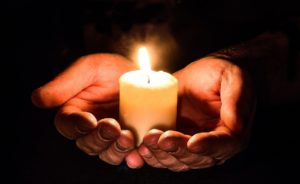
*******
Thanksgiving 2020
ANTICIPATION. The 25-pound turkey in the oven. Dining room table, set with our finest china, extends to accommodate 18. The doorbell rings. We greet extended family with big hugs. Suitcases fill the guest rooms. Our traditional Thanksgiving to begin cozy and warm inside the house.
DISHEARTENED. The 14-pound turkey is in the oven. Two large tables are set on the lanai. The disposable plastic plates and silverware are positioned with plenty of space to safely distance the 9 expected guests.
The doorbell rings. Quick, put on your mask. Relatives are whisked through the house to the safety of the backyard. Kisses are thrown through masked faces. There are no hugs this year. Perhaps a few sneaked elbow bumps.
There will be two generations instead of three. Grandparents won’t be flying in. Airlines are filling center seats again. Out of state regulations require two weeks’ quarantine upon returning home. One of the aunties, a nurse on a Covid-19 unit, succumbed to the disease. Her chair is forever
GIVING THANKS. Turkey, cranberry sauce, green bean casserole and pumpkin pie. The familiarity of tradition raises our spirits. We bow our heads, thankful for the love of family. Laughter fills the lanai. We may be drinking from plastic, but we toast with the finest champagne.
It’s five p.m. We reach for our devices – cellphones, iPads, laptops. Extended family Thanksgiving Zoom. Thankful for the electronic era in which we live.
FAITHFUL ANTICIPATION. We adhere to the guidelines and keep each other safe. Cloaked in protection, we look ahead, faithfully anticipating big hugs and sleep-overs for Thanksgiving 2021.
*******
One Nation, Under God, Indivisible
With less than a week to go until the results of our election, I am weary of the rancor and discord that has our nation more divided than I can remember in my lifetime. It goes beyond the politicians running or participating in the process. For us to be so divided, something has gone awry with the American people. It seems that no matter who wins, the American people will still be divided. What will it take to restore one nation under God indivisible?
As a small child I remember placing my little hand over my heart and reciting those words, (with the exception of Under God, which was added when I was a teenager). In my young mind, the statement was instituted by our founding fathers and represented reality. I recited the final words, “with liberty and justice for all,” and with a child’s trusting heart, I just knew they were talking about me.
America may have been a perfect union for a large segment of the population, but it has never been perfect for the totality of its citizenry. If we had remained stuck in the time warp of the nation’s beginnings, you would not be reading my words. In our Southern slave history, it was against the law for a Black woman like myself to be taught to read, let alone write a blog for a local newspaper. This nation is a work in progress, ever striving toward an ideal.
What can we do to not only restore, but moving forward, to create an indivisible nation?
Covid-19 could have provided an opportunity for national healing in more ways than one. It is an enemy common to all of us: young-old, Black-White, Republican-Democrat, rich-poor, gay-straight, immigrant-natural born. Instead of being a unifier, it has been turned into yet another source of division. Why did we not come together and fight this common enemy instead of making false enemies of our fellow Americans?
There is still time to choose elected officials who will reach across the aisle for the good of the whole. We need not always be of one mind, in the sense of having the same opinion. Surely there is room for disagreement, but our executive/legislative/judicial system is designed for compromise and conflict resolution with reason and civility.
As we raise our voices to make positive changes for all segments of the population, the rule of law and peaceful protest are not mutually exclusive. On the one hand, looters and armed self-appointed militia are equally at fault in wrongdoing, and punishable under the law. But be clear, assault weapons in the hands of civilians or law enforcement have no place in response to unarmed citizens expressing their first amendment rights.
Our politicians reflect us, as individuals, and the values that we express by our spoken and written words, as well as by our actions. The term American core values has been overstated and underutilized.
In anticipation of the post-election era, this might be a good time to reflect on the values that we want to project onto our nation. My list begins with compassion, empathy, rational thinking, kindness and peace. I invite you to compile your list and reflect those words in your actions as you go about your daily life.
And demand those values in the leadership you choose.
*******
Missing Walter Cronkite
My mind is pounding with the cacophony emitted by the spokespersons on 24-hour news, and I’m missing Walter Cronkite.
Walter was a tele-journalist. He followed the journalists’ unbiased reporting code of who-what-where-when-and-how. After giving us the factual news of the day, he would look benevolently into the camera with his closing words, “And that’s the way it is.”
Walter was a reporter, not an editorialist, so we never knew his opinion on anything. We were left to digest the events of the day and form our own conclusions.
Walter was not one to show emotion, yet he evoked the feeling of trust with his calm and soothing voice, his steady gaze, and his kindly demeanor. But I’ll never forget the day he looked into the camera, took off his glasses, wiped a tear from his eye, and announced the assassination of John F. Kennedy.
There was no opportunity to get all worked up and upset over binge-watching, as there were no 24/7 news channels. Six o’clock, that was it, unless you stayed up for the eleven o’clock news.
We only had three major network channels, and no cable. There were no opinion makers regaling us with their conclusions, lulling us into believing that their analyses represented objective fact. The concept of fake news had not yet been invented.
Our parents had a hard and fast rule: “never discuss religion or politics.” This was designed to keep our relationships with family and friends intact. As young adults in the ’60s we broke that rule. We loved to argue politics, it was the way we exercised our brains. Drinks in hand, we yelled and shouted at each other, Republicans and Democrats alike, then waved a friendly good-bye and went on our way.
It never crossed our minds not to invite Uncle Dave to Thanksgiving dinner because of his politics. Friendships did not succeed or fail based on party affiliation.
Sadly, Walter has been replaced by commentators who have begun to look and sound the same to me no matter what channel I’m watching, as well as by websites, Twitter, and Facebook. For many people, these sources constitute their main suppliers of news today and hone in on people’s deepest fears and unconscious insecurities, sadly widening this country’s political divide.
I’m weary of TV, being inundated with social media notifications, and being wary of sharing opinions with friends. Walter Cronkite, I miss you . . .
And that’s the way it is.
*******
Thoughts on Race – September 2020
I used to equate racism and prejudice. Prejudiced people were those who wanted to deliberately deny my rights because of the color of my skin. They prohibited me from buying a home in White neighborhoods. They actively excluded me from certain jobs, especially in the private sector. They told me I couldn’t go to elite colleges. These were people who purposefully tried to hold me back, and in my judgment, they were prejudiced and racist.
The term racism has evolved during my lifetime to include a broader range of subtleties.
I have White friends who welcome me in their neighborhoods, invite me as a guest in their country clubs, applaud my level of education, include me in their social gatherings, have even had me officiate at their family weddings. They have rallied with their support during times of illness. These friends would and have turned heaven and earth for me. By no stretch of the imagination are they deliberately prejudiced and I would not label them racist.
But at a more subtle level, their life view is race-based.
Their perspective on life is measured by their whiteness, and the comfort and superiority that they take for granted. White is the standard by which they measure the nation’s population. With the exception of curling their hair, tanning their skin, or dancing to r&b, these folks would not aspire to take on the characteristics of red, black or brown. White is the standard to which they aspire: the standard by which they judge the rest of the world.
And they succeeded in passing this standard on to many of us Black folk. A large number of our parents and grandparents caught onto this quickly. They believed in the American dream and passed it on to us. We acculturated ourselves to the speech patterns, hairstyles, and dress codes of the majority population. We were admonished not to “talk colored” or to “act ghetto.” And yes, we found success, and many of us achieved the American dream, although not always at the level of Whites of equal education and training.
Many White people of good will have unwittingly participated in a racist system and reap the benefits without willfully committing racist acts. In a sense, they have become racists by default, because of the systemic racism that has shielded them from ever having to think about their whiteness as a source of inconvenience.
The comfort of being White in America is taken for granted.
If you are White and reading my blog, I assume you are a person of good will. I invite you to engage in a bit of introspection. Imagine a magic wand were waved over you today, would you welcome the opportunity to relinquish your white skin and spend the rest of your life as a Black person?
If your answer is no, think of the reasons. Then reflect on what societal norms you, yourself, may unwittingly be supporting that would make your life in a black skin so unthinkable.
*******
Yes, Your Life Matters
Were you ever followed by department store security because your skin is white?
If not, your life has always mattered.
Were you ever denied a job simply because your skin is white?
If not, your life has always mattered.
When your son was old enough to drive, did you sit him down and tell him: If you’re ever stopped by a white cop, roll the window partially down, put both hands on the steering wheel, and do not reach for your registration in the glove compartment. He’s likely to think you’re reaching for a gun and he’ll shoot you, no questions asked. It’s called “the talk.”
If not, your life has always mattered.
Were you ever handcuffed at your front door while trying to enter your own house . . . in a white neighborhood?
If not, your life has always mattered.
Was your great, great, great grandmother raped by the man who owned her, then forced to bear his child who would be sold into slavery? Was your great, great, great grandfather sold on an auction block like a piece of merchandise?
If not, your life has always mattered.
Was your son ever snatched from his bed in the dead of night, then hanged from a tree to die?
If not, your life has always mattered.
All we Black people ask is to be able to say our lives matter . . .
Just like your White life has always mattered
*******
Momentum
For the past ten years, the Safety Harbor community has been an integral part of my life, and I have always been treated as if my life matters.
I was wholeheartedly in favor of the Black Lives Matter – And Justice For All signs, and when the Commission voted to display the signage on city property, I viewed it as two steps forward.
I was disappointed when, at the following week’s meeting, the decision was rescinded in favor of a generic replacement, and I viewed that as one step back.
I believe the main issue at hand is a misunderstanding of the concept of Black Lives Matter. Some are labeling it a political issue. In actuality, it is a moral, civil rights affirmation. Any rhetoric to the contrary dilutes the historical and present-day continuing struggle of Black Americans.
Rather than backtrack and remove the signs, the city could have looked upon this as a teaching moment to educate people as to the true meaning of the principle of Black Lives Matter and its impact on the Black citizens of Safety Harbor.
The momentum is slowed, but it need not be lost. Education and dialogue, based on harmony and respect, are a major key to change. This will take courage on both sides. We live in stressful and emotional times. We are used to preaching to the choir instead of truly listening to others’ viewpoints that differ from our own.
The internet is providing a platform for ugly rants that would not be tolerated face-to-face.
To add to the discomfort, unfamiliar words are being introduced to the national vocabulary: Systemic Racism, White Privilege, White Fragility. These words call for the majority population to do some internal soul searching—an unfamiliar and uncomfortable process.
We are not moving forward as quickly as I might like, but the stumbling beginnings of conversations have started.
Two steps forward, one step back. Reset. Let’s keep the momentum moving forward.
*******
George Floyd: My Response
It’s been over two weeks since the brutal murder of George Floyd and I’m only now able to write about it. My initial response alternated between rage and numbness, as I was catapulted into Black PTSD—in no condition to write a blog that would properly honor Mr. Floyd. I am betrayed once again by my country’s broken promise of liberty and justice for all.
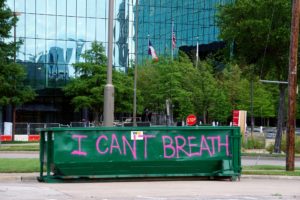
I feel deep gratitude to the seventeen-year-old bystander for the cellphone video that went viral. The call-in by the secondary police officer was cold and matter-of-fact, belying the brutality being witnessed across America in real time. Were it not for the concern and quick action of the surrounding witnesses, this case would probably go unnoticed as a routine stop with accidental death.
My heart is warmed by the police officers who took a knee with those who protested peacefully, a spontaneous gesture of unity in the absence of unifying executive leadership at the federal level.
I give two brief sentences to the looters, not wanting to honor their actions, for they do not honor Mr. Floyd. Although I do not condone the looting, I do understand it as an eruption of rage built up over centuries of marginalized America.
I am inspired and uplifted by the level-headed integrity of the Floyd family. In the midst of their grief, and surely their anger, they spoke out against violence, and kept their focus on a mindset that would ultimately lead to solutions.
Mr. Floyd was martyred in the cause that would expose to our nation and to the world, the element of police culture that continues to perpetrate harassment and criminal behavior against Blacks. These rogue cops are fueled by their entrenched belief in white supremacy. I am comforted to see the large numbers of White demonstrators who abhor the misdeeds of their own race and stand in unity with their Black brethren to correct the national injustice.
We live in transformative times, but I offer these words of caution: inevitably, “breaking news” will shift to another topic, another issue. We must remain steadfast in our demand for criminal justice reform that will truly impact the systemic mindset and deliver the promise of equal treatment under the law, honoring the memory of George Floyd and those who died before him.
*******
Black History That We Were Not Taught
Growing up in a Northern suburban school system, there was so much about Black history that we were not taught. After all, it was the 1950s.
We were not taught that Southern churches espoused that Blacks had no souls. A lie created in order to justify the enslavement of a whole race of people, but to still feel comfortable facing God each Sunday morning.
We were not taught that there were thriving cities within the countries of Africa. The so-called dark continent was not all about savages running half-naked through the jungle.
We were not taught that white Europeans and black Africans engaged in commerce with each other as equals. That the image of an inferior race was perpetuated in order to provide free labor for building the economy of what would become the southern United States.
We were not taught that George Washington, the revered “Father” or our country, himself owned slaves.
We were not taught that it was common for the masters of Southern plantations to creep down to the slave quarters and sire little brown babies. When their mulatto sons and daughters were of working age, they were often brought into the mansion as house slaves. A slap in the face not only to the female rape victim, but also to the black male head-of-household. A slap in the face to the white mistress of the manor who, on a daily basis, was confronted with her husband’s golden-brown offspring.
We were not taught about Northern institutional racism. The term was not yet part of our vocabulary. We were brainwashed into believing that the only true racists were in the South. After all, in the North, there were no actual laws against Blacks living in certain neighborhoods, attending certain schools, or being excluded from a whole host of private sector jobs. Yet there was covert racial discrimination in those societal institutions. Years back, this went under the heading of that’s just the way things are and we should be grateful that we did not live in the South, the land of Jim Crow and lynchings.
We were not taught that there was a systematic brainwashing creating Blacks as an inferior race through the depiction of savages worshiping totems, or images of pickaninnies and black-faced minstrels.
We were not taught that the misrepresentations and omissions of our childhood education would spawn generations of Americans whose misguided views of race, lingering into adulthood, shape attitudes and polices even now in 2020.
*******
Safeguarding Martin’s Dream: January 2020
With quotes from Dr. Martin Luther King in Italics
I have a dream that my four little children will one day live in a nation where they will not be judged by the color of their skin, but by the content of their character.
Those were exciting times: times of hope, rocketing progress, moving towards the realization of the Constitution’s true meaning, moving forward, always forward—and upward.
The walls of many Black homes displayed pictures of Jesus and Martin Luther King, in close proximity to each other. Two saviors, one in the Godly realm, the other in the human realm, but with the spirit of Godliness within. We were secure in the knowledge that life, though not perfect for Black Americans, was getting better and better. The upward spiral was assured.
I’ve been to the mountaintop. . . And I’ve seen the Promised Land. I may not get there with you. But I want you to know that we, as a people, will get to the Promised Land.
We could not predict the groundswell of Americans holding onto the old ways. In 2019, many of us feared that our country was sliding back down the mountainside. But we must not be discouraged by the divisiveness of the past decade. We can invoke the words of Martin Luther King and safeguard his dream.
Only in the darkness can you see the stars.
As a young girl I saw Martin as a hero for me and all Blacks in America. But as I matured into adulthood, I realized that yes, Martin was an outstanding figure in Black history, but he transcended race; he was a profound figure in American history. His message was universal and timeless.
Many of our white brothers . . . have come to realize that their destiny is tied up with our destiny. And they have come to realize that their freedom is inextricably bound to our freedom.
We may have all come on different ships, but we’re in the same boat now
My ancestors came to America from Africa on slave ships, from Europe and the Caribbean via Ellis Island, and some were already here when the first explorers landed and thought they had discovered a land that was not lost. Today the port of entry may not be via ocean on a ship. It may be miles on foot, then crawling on belly under a wire fence to freedom.
People fail to get along because they fear each other; they fear each other because they don’t know each other; they don’t know each other because they have not communicated with each other.
It’s been my experience that my adult friends from other ethnicities, who do not embody prejudice and racism, were primarily raised as children with meaningful friendships of other cultures. Diversity for them was the norm.
As we enter 2020 we can affirm this spirit to leave divisiveness behind, and we can proactively reach out to communicate with people who are different from us, both culturally and politically.
Martin’s was not a wishy-washy sentimental philosophy. His was a strong conviction, requiring that we back up our beliefs with action.
The ultimate measure of a man is not where he stands in moments of comfort and convenience, but where he stands at times of challenge and controversy, . . . There comes a time when one must take a position that is neither safe nor politic nor popular, but he must take it because his conscience tells him it is right
The challenge for us is to do so without letting hatred into the mix.
I have decided to stick with love. Hate is too great a burden to bear.
I, personally, have the mark of black, white, brown, and red imprinted in my DNA. To hate anyone of a different ethnicity would be an act of self-hatred. I have the blood of Republicans and Democrats in my veins. To hate a member of either party would be an act of self-hatred.
As we enter this new decade, let’s reflect on Dr. King’s lessons during his birthday month, and keep climbing.
*******
Compassion for the Holidays
I was enjoying a leisurely afternoon as I sat on a bench in front of the Gazebo, absorbing a huge patch of sunlight that shone forth amidst the shade. People strolled by and we greeted each other with a nod, a smile, or a friendly “hello.” A woman approached and asked to sit down beside me. Although we were meeting for the first time and hadn’t even exchanged names, she began a lengthy monologue. Suddenly, her eyes filled with tears and her sadness overflowed as she shared her sorrow with me.
We’re in the midst of the happiest season of the year; decorating our homes, buying those special gifts, preparing to celebrate with family. It’s the most joyful time of the year. But what if it isn’t?
Some folks are spending the holidays in the shadow of other people’s joy.
A tree laid bare by sorrow. Unopened boxes of tinsel and ornaments. Santa won’t be visiting this year. The six-year-old’s cancer was, indeed, terminal.
Across town, a family visits a nursing home. “Hi Grandma.” The little ones fling their arms around her neck. Vacant eyes look back. “Merry Christmas. By the way, do I know you?”
A mom drops a letter to Santa in the mailbox as she heads to work, and on the way home exchanges it for a pink slip. A Christmas gift from her boss.
“Don’t worry, everything will be fine.” Empty words for those who are suffering. The stranger beside me on the bench served as a reminder that some friends and family members may be hiding their true feelings beneath their holiday smiles. It could be a sad event that we already know about. Or we might just sense from their demeanor that something isn’t quite right. We can’t make the source of the unhappiness go away with our words. But we can communicate our compassion through our eyes, a comforting hand on the shoulder, or a hug with words unspoken.
For those of you who are struggling through this holiday season, I offer you my prayers that you will find comfort and that by Christmas 2020 there will be joy in your life once again.
*******
Safety for Our Children: Then and Now
1951. It was Saturday morning, and I was heading out to visit my auntie in Harlem.
In the suburbs we had no subways, so I walked the quarter mile to the main highway, looked both ways, then dashed across the four lanes to catch the bus. About fifteen minutes later, having crossed the city line, I got off the bus, ran down the subway steps, and followed the signs: D train, downtown. As long as I heeded the rules—walk with confidence, don’t look strangers in the eye—my safety was assured.
An eleven year-old girl making her way alone through the city.
Getting off at 145th Street, I walked the ten minutes down the hill. One guy whistled. I smiled inwardly, but kept my gaze fixed ahead. There was a vagrant slumped by the curb.
I turned the corner and looked up toward my auntie’s apartment, a third-floor walkup above the neighborhood barber shop. Mr. Alvarez, the owner, had first chair by the window. I saw him look outside and I waved as I arrived on the stoop. He interrupted his customer’s haircut and came out to join me.
I entered the foyer, rang Auntie’s bell, then came back outside, to wait for the intercom: my auntie leaning out her third-floor window and calling, “Come on up!”
As usual, Mr. Alvarez remained on the stoop as I disappeared into the building. In a few moments, Auntie and I leaned out her window.
“All clear,” we called down.
My protector went back inside to continue trimming his customer’s hair.
*******
Busch Gardens many decades later. My husband and I were enjoying an all-day outing, when I noticed a little girl standing alone and looking all around. She appeared to be about eight years old. Just then, another woman walked up and approached the child.
“Are you lost, honey? Where’s your mommy?”
“I can’t find her,” the child replied, and began to cry.
There were no security guards in sight. By this time about five other people joined us. Natural instinct would be to put a comforting arm around the child, or take her by the hand and try to help find her mom. But we all kept our distance. In this day and age, no one dared touch her, lest we be accused of abduction or molestation.
“I’ll go look for a security guard,” one man volunteered. We still watch after our children, but the rules are different.
As we waited for help to arrive, we formed a circle around the little girl to prevent her wandering off. A community of strangers enfolding a child in safety.
*******
Preview 2020
The Values and Moods of Autumn
Neighbors’ lawns filled with jack-o-lanterns, skeletons and spiders herald the approach of Halloween—fun, harmless mischief, a sense of community. I remember being a little girl all dressed up for trick-or-treat with my friends. We’d knock on doors and reach up for our treats, the one time of year when even our parents approved of the endless supply of candy. We steered clear of the stone house midway down the block. Everyone knew the crazy lady lived there, ‘though no one had ever actually seen her. Parents didn’t accompany us. The big kids took care of the little kids. It was safe back then.
November approaches with the anticipation of Thanksgiving. Extended family, both local and out of town, will convene with warm hugs and laughter. A prayer of thanksgiving will be offered up, with perhaps a sad reference to the grandparent or sister who will be forever absent. But will there be tension beneath the surface? Will the two feuding uncles make a conscious choice to finally put aside their differences, remembering the bonds from their childhood? In the end, hopefully the family values of cohesiveness, hard work, kindness, loyalty, safety, generosity, and respect will be evident as conversation fills the long day, extending into evening.
Sandwiched between these two holidays is the coming of election day. An opportunity to reflect on the privilege of living in a democracy. The right to make our voices heard and to help steer the direction in which our country is going. To consider the values upon which our country was founded.
What can we anticipate in the months leading up to the 2020 election? Recently, it seems that many of us live by two separate, and sometimes opposing sets of values: our core values learned early in family, and our political values tainted with external concerns. Like the two feuding uncles, we can choose to tone down our animosity despite our differences. Let’s merge our political values with the values taught through generations of our families in the spirit of unity and respect.
*******
American Family Values, Myth or Reality?
Children in cages on US soil: American family values, myth or reality? How does a nation that places such high regard for the family justify tearing children from the arms of their parents and warehousing them? Where is the justification for the trauma of this sudden and unexplained separation? This type of disregard for family is reminiscent of dark parts of American history.
Years ago, during slavery time, “Massa” would creep out of the big house in the dead of night. Lusting after one of his comely slaves, he would burst into her family’s quarters, disregarding her husband’s presence, and plant the seed of a mulatto slave baby. Over the years, the mistress of the manor would have to endure the sight of numerous café au lait slaves. Adultery and rape: American family values?
In the early 1800s an event occurred that was not in any of my elementary school books when we studied the American Indians. Native Americans were herded into a forced migration from South to West. It took a tour guide two years ago in Sedona to introduce me to the Trail of Tears. The tribal elders, keepers of Native history and cultural folklore, were massacred to essentially wipe out knowledge of the history of their people, with the intent of preventing the culture from being passed down to future generations. Children were whisked off to Christian schools and the cutting of their hair was symbolic of cutting their ties with tribal culture. Grandparents and children removed from their families. American family values?
Today we are horrified that at our borders, immigrant Latino children are torn from the arms of their families. We respond as if this is the first time that such inhumanity has occurred in our idealized nation. Clearly, this is not a new phenomenon in this land which has a systemic history of destroying black and brown families within our borders, then whitewashing the history that is fed to our children.
Wake up, America. We are better than this. Yes, we have an idealized view of family values, as depicted by The Brady Bunch, Little House on the Prairie, and The Waltons. But we also have a dark history of family devaluation that is being revisited now, and that must be stopped. A nation with the creative brain power and determination to put a man on the moon certainly has the ability to resolve the plight of suffering immigrants in a humanitarian way. We can reach a solution that keeps families in tact, and honors the purported ideals of this country.
*******
Not a Mascot
“I’m a human being . . . I am not a mascot!”
The Native American woman stood before the TV cameras, angry, insulted and ready to make a difference. The look on her face and the tone of her voice reflected a deep hurt that appeared to resonate from her heart. The issue at hand: “Indian” mascots used to represent schools in Hillsborough County. Just another way in which America has dehumanized and marginalized an entire group of people.
I must admit, I had not given this issue a thought prior to hearing her words. My school mascot was the Roosevelt Indians. We were New York suburban kids brought up in a culture and time in which marginalized and politically correct were not part of the national vocabulary. Our school mascot was a reality of our everyday life, having no significance to us other than supporting a winning football team.
During my adult life, there has been a growing national sensitivity to no longer use the term Indian. After all, the early inhabitants of North America were mistakenly named when the European explorers thought they had arrived in India. Native American became part of my enlightened vocabulary.
The woman on TV went on to say that the definition of a mascot is good luck charm. Is there any good luck in being herded onto reservations while your captors grab up the prime real estate for themselves?
Hillsborough School District, has subsequently voted to eliminate the controversial mascots from six of their schools. This prompted me to Google my own high school. I was disappointed to learn that Roosevelt H.S. still retains the Indian label. Thank you, Hillsborough residents, for raising my awareness. When this blog is posted, I will forward it to my alma mater.
#######
Black History, May 2019
It was not Black History month, but as I looked out over the crowd of faces, I was filled to overflowing with pride. Every shade of black and brown was represented in significant number: African Americans, Asian Americans, East Indian Americans, Caribbean Americans, Latin Americans and more were represented; side by side with white faces completing the mosaic. My grandson’s graduation at Rutgers University.
My thoughts took me back to my own college graduation. The year 1962, and as I looked across the crowd of graduates, it was a sea of white. But if I peered more closely I could see three young Black men. Adding them to myself, there were four Black graduates. And I seem to remember one Asian girl, giving us a grand total of five graduates of color in a class of over 1,250.
Do you wonder how this anomaly could occur in the North, the land free from segregation? Back then, a photo was required to accompany a college application. In those days, the photos were all black and white. At the time, my skin had not been transformed by the Florida sun into its present bronze copper. My hair was long and straight. My photo and I made it past the initial culling, and the Cornell scheduled a face-to-face interview in New York City.
I knocked on the admissions officer’s door.
“Come in,” said a woman’s friendly voice from within.
I opened the door, and the interviewer’s mouth flew open in astonishment.
“Oh my goodness, we didn’t know you were colored.”
Surprisingly, I made it past admissions. Four years later, in the autumn following my graduation, I attended an alumni luncheon. The keynote speaker proudly remarked, “I am pleased to announce that the university will now be accepting Negro students.”
Apparently, I was not only Black, I was invisible. And what about those three other Black students?
My attention returned to the present. The university was honoring the one hundredth anniversary of its first Black graduate, Paul Robison, singer, actor and political activist. Next, the commencement address was delivered by twin Black alumni NFL stars. Finally, the main event: as the students filed across the stage one by one, many graduating with honors, several being the first in their family to attend college.
I couldn’t help thinking about moments of great distress I’ve had in the past year, regarding the racial climate in my country. But I realized how nice it is to have reached the grandparental age. It allows me to see the world in historical perspective because my life spans enough decades to be a part of history. Progress can be slow, and may be accompanied by setbacks. But sitting in the audience at my grandson’s graduation, I savored my own Black history moment, representing diversity at its finest.
*******
Surviving in the Aftermath of Violence
A teenage girl is dead: life had become unbearable as she attempted to cope with the aftermath of the Parkland violence. She lost the battle of survivorship and took her own life.
Weeks later, while watching the evening news I saw a rally in Tallahassee, organized by the Alliance for Safety and Justice, addressing the mental health needs of survivors of violence.
How often we count the number of the victims of mass shootings in terms of the numbers of those killed: Parkland—17, Pulse Night Club—49, Pittsburgh Synagogue—11. The tally of survivors rarely appears in the media, yet they, too are victims in the aftermath of violence. The children who escaped unscathed, running from the gun shots. The teachers unable to protect those entrusted to their care. The mothers, fathers, sisters, brothers, grandmas, grandpas, aunties, uncles. The tally of these victims is exponential, all left with wounds that may scab over, but will never fully heal.
The memorial services are over, the candle light vigils have ended, and America goes back to its routine . . . until the next massacre.
So often we think of the term survivor in relationship to sexual assault, or the PTSD of military atrocities. The massacre survivors are dealing with a different kind of aftermath. If they were present, they may be suffering from their own unique PTSD and perhaps the fear of ever re-entering the massacre location. Imagine being a student gripped with terror every time they cross the threshold of their school. Or, like the teenager who took her own life, they may be suffering survivor’s guilt. “Why didn’t it happen to me? Why was I spared?” Or a parent may be suffering “if only” guilt. “He said he wasn’t feeling well. If only I hadn’t sent him to school that day.”
Almost three years ago, I visited the Pulse Night Club Memorial. I confess that my focus was limited to those who had lost their lives. But with this new awareness, I ask myself, “How can we be helpful to those who weren’t actively involved in the incident and with those whose lives were spared?”
We can use our vote to support Alliance for Safety and Justice in their efforts to promote legislation that increases survivorship mental health treatment in Florida. We can support Community Tampa Bay’s ANYTOWN, promoting diversity and inclusion among teenagers. We can vote in favor of effective gun control laws. We can be emotionally compassionate to our friends who look fine on the outside, but still anguish on the inside, having lived after the tragic death of a loved one.
I am reminded of a recent encounter with a young man whom I hadn’t seen in awhile. I was pleased to see him and greeted him with “How ya doin,’ you’re looking well!” I held back the tears as he responded, “I’m never well . . . I wear a mask.”
*******
Worldwide Browning
A phenomenon of browning is spreading worldwide. The horrific massacre of New Zealand Muslims brought it into focus for me this past week. As an American woman of mixed African, Caribbean and European heritage, I had limited my perspective on people of color to my country of birh. But the recent tragedy in New Zealand, though religious in nature, is at the same time a racial crisis. The perpetrator was not only anti-Muslim as a religion, he was a self-proclaimed white supremacist. And sadly, he was inspired, in part, by rhetoric from the United States.
When I was in college, a requirement for all students was a course entitled “The History of Western Civilization.” It was purported to give us an understanding of our forbearers and the roots of our culture. I sat through a semester learning about how white people, deemed the most civilized folks on the planet, had progressed over the years. There was no mention of the contributions of Africans, Asians, East Indians, or any others of worldwide hues.
Several years ago, I was in Hamburg, Germany, and much to my surprise I heard fluent German coming forth from the blackest of African passersby on the avenues. These days, I turn on the TV and hear the most traditional of British accents coming from the mouths of actors of multiple shades of black and brown. Not to mention Meghan Markle adding her African American presence to the palate of British royalty. Unlike the Western Civilization of my college years, people of color are taking their place in the ongoing history of Western Civilization. Unfortunately, studies show that the increase in immigration in the twenty-first century is accompanied by an increase in European racism.
Previously, I have been focused on racism in the United Sates. I was deeply outraged at the disruption of Latino families of color at the border of this nation that calls out “Give me your tired your poor, your huddled masses yearning to breathe free.” I knew that the resurfacing of the Arian Nation, Neo-Nazis and others of that ilk constituted a dangerous resurgence of overt American racism. But I had not thought beyond our borders until the New Zealand Massacre.
America is in a state of flux. New Zealand is in a state of flux. Humanity is in a state of flux. In the words of Martin Luther King Jr, “He who accepts evil without protesting against it is really cooperating with it.” In 2019, people of good will worldwide must stand up and make their voices heard.” Terrorism of any kind is not to be tolerated
*******
Vacationing From the News
To support my sanity and my positive view of life, I’ve taken up the practice of vacationing from the news. Rather than being glued to the networks seven day a week, I watch the news three days a week.
If I want to see what’s going on in my world, I step outside my door and drive into town. It’s peaceful there. People on Main Street are going about their daily routines: shopping, running errands, going to work, grabbing a bite to eat, perhaps heading to the Spa to work out. They are friendly, courteous and helpful. No one’s shouting, no one’s fighting. From the corner of my eye, I see an occasional scowl. And I hear an occasional harsh word. But that’s the exception, not the rule.
I’m neither naïve nor ignorant. I know there is harshness in the world. I know that there are people who step outside their door into a world of hunger, sickness and violence. And I know that it’s important for me to be aware of what lies beyond my happy, safe zone. That’s why I watch the news three days a week. It matters that I know when injustice is occurring. It’s necessary for me to know when people are hurting or in need. It guides me to make decisions as to how and when I can be of help. Can I offer assistance through volunteering my services, or providing financial contributions? Can I make my voice heard through calling my legislative representative, or in November through my vote? Yes, being well informed is a must.
But Breaking News is a business. It keeps money flowing to the networks and their sponsors. Sensationalism keeps us riveted to the television. If we take daily doses, it can mold our perception of reality into thinking that harshness, cruelty, and verbosity are the norm in our land. It can send our emotions reeling in the direction of fear, anger, even rage.
I’m not living in a fairytale world of denial. I acknowledge the existence of negativity, but I hold firmly to the belief that positive reality exists in greater proportion. So on the days when I’m vacationing from the news, I step outside my door to see what the world is about
*******
Waterfront Chronicles
A little tyke came speeding by on a two-wheeler with the confidence of a racing pro. Most children his age need tricycles, or at best a bike with training wheels,
“Your kid is amazing!” I exclaimed.
“Yes,” answered the mother . . . no humility, just certainty. And with a hint of an Eastern European accent, she called out as she rushed to catch up with her son.
I continued down the pavement. The waters of Tampa Bay defined the shoreline to my left. The Safety Harbor Resort and Spa bordered the expanse of grass to my right. A miniature ballerina approached. Resplendent in her tutu, and tights, the graceful preschooler skipped along the walkway, her blond curls flipping from side to side. Was she destined to be a stay-at-home mom, an engineer, or would she eventually fulfill her childhood dream and dance the Nutcracker on the stage of Ruth Eckerd Hall?
Further along the pathway, a smile flashed my way.
“How ya doin’?” greeted a young dad, as he and his son kicked off their flip flops.
Stepping onto the sand, they dashed into the bay and savored the ankle-deep water. The strip of sand was tiny, about the size of an average living room. But to these two, it was their own private beach. Hoisting his son on his shoulders, the dad pointed into the distance, then looked back at me.
“Dolphins. Five of them!”
I approached the end of the walkway. From under the triangular canvas shade sails, I had a clear view of the pier. A dozen black youth spread out at two picnic tables. Their laughter and camaraderie rose in the air as they jostled back and forth. Then, gathering up their belongings to leave, they policed the area, making sure not a scrap of paper or food was left behind. Respect for common ground.
January 2019. Children, families, older adults, kindness, diversity, community, hope.
The best that life has to offer for the New Year, exemplified here at our Waterfront Park.
*******
Amendment 4: Extending Justice
Is our criminal justice system based on punishment for life, or restitution/debt paid?
When I was a kid, I watched westerns and rooted for my cowboy heroes against the crooks. Over the years, I’ve been a fan of whatever the latest police TV show was popular. Criminals were the “bad guys,” fictional characters on the screen for my entertainment. I never gave much thought to criminals . . . as people that is.
But with the upcoming election, I’ve had to reconsider my position. No, reconsider is not the word. I’ve had to establish my position.
Just as a person is presumed innocent until found guilty, a person who has served their time should be considered rehabilitated (unless they show otherwise) and bestowed the rights of full citizenship.
It would seem logical to allow the ex-offender to regain the rights of citizenship. In the case of Florida, this would include adding the right for non-violent ex-felons to vote. This is the intent of Amendment 4.
As a northern suburban Black child, I was raised in White schools, and the education I received was Anglo-centered. With the exception of slavery and Jim Crow laws, we were taught nothing about how our institutions, protected by the legislative and criminal justice systems, worked methodically to keep minorities at a disadvantage.
A disproportionate number of Blacks fill the jails. Consequently, when released, a disproportionate number of Blacks in Florida are denied voting rights that are afforded to ex-felons in most states across the nation.
In my younger days, I would not have made the leap from disenfranchising ex-felons to the concept of limiting or preventing Blacks, Browns, and the poor from voting. As a Northerner, voter suppression to me, meant poll taxes, literacy tests and counting beans in a jar. These were Southern racist means to keep minorities away from the decision making process afforded by voting.
Equal protection under the law is purported as an American standard. In reality, the person of financial means, able to retain a high-end lawyer, has a better chance of having a felony reduced to a misdemeanor. For the person in the lower economic strata the felony conviction is more likely to stand.
If I had access to this information when I was young, my views on the humanity of criminals would probably have been different. I might have been more compassionate towards the “bad guys.”
But it’s not too late to extend my compassion and vote Yes for Amendment
*******
Enlightened Self-Interest
It was Saturday morning in the fall of 1952. I was jolted out of my sleep by the sound of my father’s voice booming through my open window. Dazed and rubbing my eyes, I tried to make sense of this strange awakening. My father was dignified and soft-spoken; booming was not his style, and why was he yelling from outside? As I ran to the window, I caught a glimpse of a sound truck passing the house, with the words, Eisenhower for President. My father was on the campaign trail. In those days, in the eyes of Black people, Democrats were Dixicrats, which was equated with segregation and racism. So quite naturally, my father was a Republican: an Abraham Lincoln Republican to be exact, honoring the man who freed the slaves.
Enlightened self-interest on my father’s part.
Had my father been alive in 2008, he would most likely have voted Democratic, filled with pride that the American dream was within the grasp of a Black man.
Enlightened self-interest once again.
Sadly, we are living in an era of political polarization both national and personal. Clashes of self-interest have reached a new level. Often when we discover that a close friend has chosen a political stand different from our own, hostile thoughts come to mind.
“I’ve known him all these years and never suspected he was a racist.”
“Who would have though she was homophobic?”
“He criticizes me for carrying a gun. Has he forgotten that we have a Constitution?”
What is the answer? How can we become sensitive to the self-interest of those with different needs and agendas? Perhaps you are:
- a woman seeking equal pay for equal work
- a black man in fear of the police.
- an entrepreneur seeking tax breaks as reward for hard work.
- a lesbian seeking acceptance rather than condemnation.
- a marksman seeking to preserve the constitutional right to bear arms.
How do we find a way to convert opposition into understanding? How can our diverse self-interests become harmonious? We need to think beyond ourselves, and consider how other people will be affected by our position.
- Is the greater good being served?
- Will some one be harmed by my decision?
- Will some one’s rights be taken away?
Most importantly, is my self-interest consistent with “One nation under God, indivisible?”
*******
The American Dream for Immigrants . . . Or Not
“I’m living the American Dream.”
His skin was black as the midnight sky. His accent was from somewhere in Africa, but I couldn’t place the region. He was clearly well taught in English.
“I’m from the Ivory Coast of Africa.
Our language is influenced by the French.
His car was impeccable, and made in America. His jeans were expensive, fashionably slit at the knee. Indeed, my immigrant Uber driver is living the American dream.
I thought back on my own heritage. My forbearers were immigrants from the Caribbean Islands and Ireland. Through their American work ethic, it was my good fortune to be raised in the suburbs. I was afforded the best education this country has to offer.
I, too, am living the American dream.
His clothes were disheveled. He was surrounded by other children, all appearing to be ten years of age or younger. Encaged by wire fences. Is this what American family values have come to? Are these little ones the drug smugglers and rapists that our nation is so afraid of?
Give me your tired, your poor. Your huddled masses yearning to breathe free. Then rip them by the hundreds from the arms of their parents, as the slave masters did in the darkest part of our nation’s history.
I wonder if these children will ever be able to say—
“I am living the American dream
*******
The Remote
Ten dead, ten more hospitalized. Santa Fe, Texas. Yet another school massacre flashing all day long across the television screen. Interviews with frightened children, survivors of another threat to their innocence.
I don’t know any of those victimized families; nevertheless to me it’s personal. In fear, I flash back to my own family. Junior high, high school, university. Five grandchildren, all at risk of being gunned down by an act of random violence.
I recall the schools of my childhood. Doors open, anyone could and did walk in unchallenged. In those days, my only fear was being banished to the principal’s office for misbehavior. From kindergarten through twelfth grade, not one single incident threatened my well-being. School was a safe haven. Can I say the same for my grandkids?
The day after the tragedy, in search of the latest update on the perpetrator and the survivors, I turn on the TV. Prince Harry is marrying Meghan. All of England is celebrating. But what about the dead children? What about the grieving families? Flipping through the channels, I can find no mention of the events of the previous day.
Perhaps I should be rejoicing with the Brits.The sacrament of marriage is a new beginning. An American woman of color is being welcomed into the Royal lineage. An historic familial and societal change. A reason for me to feel elated. But the ascent from sadness and fear is too great to be scaled in one day.
What of the dead children?
*******
Rediscovering My Home Through the Tourist’s Eye
The family is visiting, and as happens each time, I find myself rediscovering my home through the tourist’s eye. Driving across the Courtney Campbell, they gasp at the expanse of water, blue . . . and still as a sheet of glass. Rows of palm trees line the road, beckoning us toward the gateway to Safety Harbor. We turn onto Bayshore Drive, with its mangroves and more palm trees, outlined by the waters of the shoreline, marking the route to downtown.
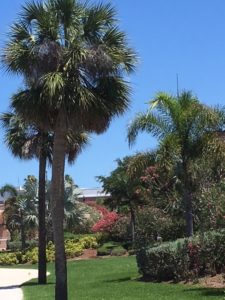 The family has left behind the chilling rains of thirty-something degree weather and their muscles relax as they soak in the eighty-something degree Florida temperatures. I traverse this road daily, and I admit that I lapse into taking it all for granted: the year-round greenery, the daily view of the bay, the temperature that rarely steps outside my comfort zone. As I pass along this familiar thoroughfare, I recall my original discovery of the Bay Area, and a feeling of renewed appreciation envelops me.
The family has left behind the chilling rains of thirty-something degree weather and their muscles relax as they soak in the eighty-something degree Florida temperatures. I traverse this road daily, and I admit that I lapse into taking it all for granted: the year-round greenery, the daily view of the bay, the temperature that rarely steps outside my comfort zone. As I pass along this familiar thoroughfare, I recall my original discovery of the Bay Area, and a feeling of renewed appreciation envelops me.
We have time for a walk before dinner. As we circle the nearby pond, I remark, “Remember the baby alligator from last year? Look, he’s six feet now.” The kids jump back from the perimeter. I reassure them. “No worries. He’s more scared of us than we are of him.”
The next day, we step onto the pool deck of the Safety Harbor Resort and Spa. I order drinks from the bar. We members still call it the tiki bar, although in recent years it sports a grander look and name. Tropical drinks in hand, we find a row of lounges together and as we sink down and stretch out, I feel like I, too, am on vacation.
The daily routine of grocery runs, laundry, bill paying and community meeting recedes. I look around with the tourist’s eye: I had forgotten about the lion statues decorating the walkway. The season has changed, and with it, a new array of flowers cascade over the planters. This magnificent beauty had become routine to me, but though the perspective of my family, I observe my surroundings in the spirit of rediscovery. As we strike up a conversation with some guests from Ireland, I remind myself that my home is an international vacation destination.
The week goes by swiftly and the visit is over. On the road back toward the airport, my daughter points towards the shoreline and exclaims . . .
“Oh look, next visit we’ve gotta stop there. They have a tiki bar!”
I look at her quizzically.
“Mom, a tiki bar may be commonplace to you, but in our eyes, it’s part of the magic of visiting your home.”
******
Safety Before Guns: The Caliber of Young Voices
When I was a little girl, I walked a mile to school, partially through the woods, alone or with a friend. The doors to the school house were open and unguarded; people flowed freely in and out. My mind was on the fun I’d have on the playground, or the new book I’d be reading in English. After school I walked to a friend’s house, or choir practice, or came straight home, again alone or with a friend or two. Most importantly, from the time I left in the morning, to the time I returned home for supper, I felt totally safe. And it wasn’t just a feeling, it was a reality.
Today, safety is no longer a given in a student’s world. After the horrific events of Columbine, Sandy Hook and Parkland, a parent may kiss a child goodbye in the morning, uncertain as to seeing them alive again.
Well this past weekend, the young people rose up and proclaimed, “Never Again.”
On Saturday, March 24, 2018, a crowd of one million strong, under the leadership of our nation’s young people, took over Washington, DC in the March for Our Lives. Across America, people rallied in support. One by one, these young people ascended the podium proclaiming that the adults have failed them and affirming their own leadership. Coming of age in the next election, they declared, “We’ll use our vote to keep ourselves and our little brothers and sisters safe.”
For these kids, guns are clearly the threat to their safety. They are looking for more than partial solutions. To them, mental illness is not the issue: a mentally deranged person with a knife could never slaughter seventeen school children en masse. It only takes one rifle to bring home a week’s worth of venison for the family. It only takes one revolver to stop a home invader dead in his tracks. Assault weapons are designed for battle, and have no rightful place in the hands of a civilian. These seventeen and eighteen year-olds are demanding that these weapons of war be banned.
And they took it a step further, identifying with those who have lost their lives to wrongful gunfire at the hand of police, or street fights in urban America. As one girl put it, “A life lost on the streets of Chicago is as important as a life lost in Parkland.”
As I rejoiced at the courage and strength of the children on the march, my heart ached for the surviving kids at home. Many are forever traumatized, the newest victims of PTSD. My heart goes out to those children who must practice run-duck,-hide in their classrooms
For some of us, the march was reminiscent of the Civil Rights Movement. I was filled with gratitude as I thought back on the youth who put their lives on the line for racial justice, being attacked not by assault rifles, but by clubs, fire bombs, and police hoses.
It was fitting that on this day in 2018, Yolanda King, the nine year old granddaughter of Dr. Martin Luther King, stood before the crowd with confidence.
“I have a dream that enough is enough,
and that this should be a gun-free world.
Period!”
As a Black woman, I swelled with pride to see my hero’s progeny take up the mantel for change. And at the same time, as I looked back at my nine year old self who had not a care in the world, I felt sad that such a little kid as Yolanda must be concerned with gun violence.
Many of us who are parents and grandparents have been fearful and dismayed regarding the world that our young people will inherit. Over the past year, our country has been in crisis with division across political, gender and racial lines. But these kids erased those lines and joined in unity and inclusiveness.
Most noteworthy was Emma Gonzalez. She called out the names of all seventeen dead Parkland children, then stood in silence for the duration of six minutes and twenty seconds to commemorate the agonizing time span of the Parkland massacre. Emma I salute you.
Listening to one young person after another articulate their legislative and voting call to action, I for one, have renewed hope for the America of my grandchildren’s future.
*******
View From The Post Office Bench
I’m perfectly angled. The late afternoon sun is kissing my face and warming my body during this unseasonably cold Florida winter. I am the observer as my town passes by. Normally, I would be an active participant, but a recent injury has eliminated me from tennis, dance and Spa workouts. Like an injured football player, I’ve been benched. I’m temporarily engaged in a spectator sport. But what better place than on the Post Office bench. A stranger approaches, smiling. “You’ve picked the perfect spot to sunbathe.”
I return to my props: my pen and a journal to edit. Purposeful activity, lest I appear to be loitering. But I continue to observe. Folks walk by leisurely. Tourists and Harborites. I can tell the difference. The tourists turn their heads from left to right, unrushed. Their gazes are searching, not sure what to expect. The Harborites are unrushed as well, but they know where they are and they know where they are headed. Their demeanor is more purposeful.
“Where have you been? I haven’t seen you in weeks!” It feels good to be missed. I give a brief accounting of my absence, happy to see this friend. At one time or another, all townspeople eventually turn up at the Post Office. I return to my editing.
Suddenly I’m jolted. A gray truck honks as it passes and the driver waves. Normally, to Southerners and mid-Westerners, the honking of a horn is a sign of rudeness and poor breeding. But this is my homey from Central Islip, so I wave enthusiastically. Honking is what we New Yorkers do.
Strangers smile and say hello. People pass by, alone, in couples, in families. A mom and dad emerge from the building with two small children who carry packages more than half their size. The girl exclaims, “This is so heavy, what could it be?” I witness childhood eagerness. An unopened package represents mystery and excitement.
I don’t have to be dancing, playing tennis or working out to be active in my town. I can feel and participate in the vitality . . . from the Post Office bench
*****
’Tis the Season to Unite
In 2017, a cloud of division has hung over our nation. I was saddened to learn that a number of my friends are experiencing diminished and even severed relationships with friends or family members as a result of political views.During the holiday season, our hearts are more open than at any other time of the year.
Let this be a season of healing; for our individual relationships and for our nation. Let us reclaim and celebrate our similarities, while seeking to understand our differences.
As a start, we could agree to a politics-free holiday meal. One of my friends made a sign over her dining room entrance: Politics not welcome here. At that special holiday dinner, we could set our differences aside and enjoy the fellowship that sustained our relationships over the years.
Granted, this is just a temporary solution, for there is still an elephant in the living room. The main issue remains: How do we communicate with each other around differing viewpoints, and yet remain loving friends or relatives? Emotions run high; there’s no easy fix. But still we must try, we have to start somewhere.
Let’s each make a New Year’s resolution to open dialogue with one other person, or with a small group of people. The goal would be to promote understanding in the presence of differences, in a respectful environment. With just a few ground rules this could be a harmonious process.
Each person gets five minutes to state their political view.
-
- No raising of voices
- No name calling
- No interrupting
- A short question and answer period would follow
- This is for clarification only
- This is not a time to preach or debate opposing view
- Then take time to reflect on what you’ve learned and move on. You may have benefited from a different point of view, or you may simply agree to disagree.
If we can allow for political differences in a spirit of understanding and respect we can restore unity to our nation one friend at a time, one family at a time
‘Tis the season to unite.
*******
African American PTSD
I was at once enveloped by anger, rage, sadness, betrayal, paranoia, vulnerability and hopelessness. The KKK, white supremacists and neo-Nazis were armed and rampaging in full combat gear. The level-headed, upbeat, positive Amy that you’re used to was sitting isolated in her living room, eyes glued to breaking news, heart pounding, respiration elevated, about to burst from frustration. “NO! We cannot go back to those days!” My screams were inaudible. I flashed back to the America of the 1940’s and 50s, then projected myself into the 2020’s, the years my grandchildren will inherit. “We cannot go backwards . . . I won’t have it!”
I recognized within myself the symptoms of PTSD. African American PTSD.
As a former psychotherapist, I knew the symptoms, common in veterans. But I have long recognized that people of color, and yes, other marginalized groups also suffer from PTSD. Mine is a milder form devoid of haunting nightmares. I did not grow up in the South. No one in my family was dragged from their bed and hung from a tree to die. I never drank from a colored only water fountain, nor was I ever denied entrance to an integrated school.
But in my own way, through Northern institutional racism, I suffered along with those of my people who experienced such indignities. I couldn’t be a cheerleader, because my blackness did not reflect the school’s beauty standard. My guidance counselor called me into her office and advised that as a colored girl, I need not aspire to the college prep track.
These days, when I attend peaceful protest rallies, I am predominantly surrounded by Whites, and I ask myself, “Where are all the Black people?” Now I realize where they are. They are at home, feeling disillusioned and powerless. Saying no matter how much education we have, no matter how big a house we can afford, to countless thousands of our fellow Americans, we are still just n_gg_rs. No matter how far we’ve come thanks to Martin Luther King and leaders of his era, we endure a segment of America that spawns ethnic hatred. That teaches six year-olds armed with firearms in kiddy neo-Nazi boot camp that they are a superior race and that hatred is not only good, it’s patriotic.
Nevertheless, I find solace in making my voice heard; through my writing, and through my presence at the many peaceful rallies that I attend. I find hope in the difficult process that we are undergoing. Hatred bubbling under the surface is finally erupting and I see the recent horrific events as a purging of our society. Be assured, PTSD will not define me. I hold steadfast in the belief that a loving humanity will continue to push forward in my America.
********
The Fine Art of Just Being
“Amy, what’s new?”
“Nothing’s new . . . just the same old good stuff.”
“Where are you traveling to this summer?”
“Nowhere, I already live in a vacation destination.”
“I’m defying the urgency to be doing and settling into a season of being.”
Being appreciative for my surroundings, my town, my friends and my family. Of being retired, with no time clock telling me when to punch in and out. Living at my own pace—perhaps speeding up today, slowing down tomorrow. Choosing how to spend my time with no external dictates. Basking in the luxury of nature, the Spa, or my own livingroom.
Part of being is reflecting, relaxing and contemplating. A time of discovering and reclaiming parts of myself that lay dormant, or releasing parts that no longer serve me. Knowing that the life I’m living now reflects my hopes of the past: hopes that are being fulfilled in the present.
You think I’ve stopped striving, dreaming, setting goals? Certainly not, but now my former type A personality is somewhere around B-minus. Don’t get me wrong, I admire doing—it got me to where I am today. And yes, I set my sights on new opportunities, but without the pressure to succeed.
“Being? You mean status quo?”
“Certainly not. Status quo implies stagnation. Being is dynamic and creative, going deep within to connect with who you truly are and then letting your actions flow easily from that inner peace.”
Knowing myself, this season of just being will not be permanent. I’ll be off and running on a new project or a new activity. But right now, I’m on hiatus. See you in September
*******
The Power of Words
As a writer, I am profoundly aware of the power of words, most especially in these times of national discord and divisiveness. Maya Angelou best described it when she said, “Words are things.” They have the power to encourage and build up, or attack and tear down. They impact us daily through TV, print and social media.
We live in a world of duality which, in the past year, has intensified into polarity. What we say has the power to create one nation united or one nation divided. Through the gift of free will, we are capable of bringing forth change with the impact of our verbal expression.
In today’s political climate, we communicate most often with those who are like us, and fail to initiate dialogue with those of opposing views. Dialogue that could result in increased understanding, shared community, softening of opinions and peaceful coexistence.
I am increasingly concerned about the world we are creating for our youth. As adults, we are meant to be role models of morality, civility and society’s ideals. We are here to provide inspiration and teach respect. So I ask myself: are we as parents, educators, media figures and national leaders modeling behavior that we want our children to emulate? If I were a young person today, would I have much reason to respect my elders?
Truth, honesty, integrity, respect, unity, compassion. This is but a partial list of words that inspire action. Words that I would hope to see empowered in our nation today..
I invite you to sign in to the comments section below, and add to my list your nouns, adjectives and verbs of inspiration. Through the power of our shared words, we can join in creating a societal climate worthy of our legacy.
*******
Politics and Friendship
“Well I have to tell you . . . I voted for ________”
You did what!?!?!?” Words said only in my mind.
I was having lunch with a dear friend. When I heard who she had voted for, I felt shock and pain. I thought I knew her after fifteen years of friendship. How could she be my close friend and have that political mindset?
I smiled and said, “Oh, that’s interesting. Can you tell me why?”
She prefaced her answer with, “This is a free country and I can choose to vote anyway I like.” Then she went on to tell me her reasoning. The conversation was adult and civil. I didn’t agree with her, but I could understand her. Most importantly, our friendship is still intact.
She went on to tell me that she made the same “confession” during a telephone conversation with a friend of fifty years. That person’s response was “Goodbye and have a nice life.” The phone was slammed down. With one x marked on a paper ballot, a friendship of fifty years was abruptly terminated.Similar scenes are repeated across the country. The end result may not be so dire, but many relations hips are challenged; diminishing closeness and trust.
Would it surprise you to know that neither Hillary nor Donald lose any sleep over our broken friendships? Did you know that neither Donald nor Hillary are even aware that we exist? So why give either of them the power to steal our joy?When someone votes against our candidate we take it personally. We assume that they’re turning against us and our ideals. But many times, our values have nothing to do with their decisions. Unfortunately, this past election has brought an inordinate animosity to the surface, and more rifts have occurred not only in friendships, but in families as well
I come originally from New York. We don’t abide by the rule that religion and politics are not up for discussion. We discuss these controversial issues openly with gusto. We gesture with our hands and raise our voices in a process that exercises the muscles of our brains. When these arguments are done, our friendships survive and are often enhanced.
Suppose we look upon our political differences as an opportunity to communicate, to ask for clarification, and hopefully to understand each other better.
*******
Political Civility in Safety Harbor
There I was, on the corner of Bayshore and 7th Street, waving a sign for my mayoral candidate. I sensed a presence a few feet behind me, and when I turned around, there was a gentleman with a sign for his candidate.
“I wasn’t planning on being here, but then , . .”, he said.
“Democracy in action.”
We both laughed, and returned to our individual tasks at hand.
Cars drove by in packs, to the rhythm set by nearby traffic lights. Some folks ignored us, others waved or honked. Sometimes at me. Sometimes at him. He and I bantered back and forth and reached an informal agreement that we’d each leave our posts at 6pm.
Walkers along Bayshore shouted encouragement, sometimes to me, sometimes to him. Occasionally they stopped for a supportive chat. There were no boos, no catcalls, no harsh words or bird flipping from walkers or drivers.
“We’re setting a great political example,” I remarked to my friendly opponent.
What a nice break from the mudslinging and accusations that were flying around town. . Occasionally we exchanged smiles, or chuckled at getting weary.
The 6 o’clock hour arrived; we signaled each other, and headed towards the parking lot.
“By the way, my name’s Amy,” I said.
He returned the introduction with outstretched hand. “See you tomorrow.”
“Your turn to bring the wine.”
“Red or white?”
*******
I awoke one February morning to find two of my friends fighting on my Facebook timeline. The argument lasted for two days, and they didn’t even know each other. I’ve had people tell me they’re afraid to talk openly with their friends because they don’t know where they stand anymore. I’ve seen hateful words traveling across the airways from folks who are usually loving and kind. Even in my Safety Harbor cocoon, I’ve heard people snarling behind each other’s backs and publishing all sorts of mean-spirited rhetoric.
What kind of example are adults setting for today’s youth? Some of the name calling and mudslinging coming from adults today would surely result in suspension, or at least detention if expressed by children in the classroom.
Sticks and stones will break my bones
But words will never hurt me.
A rhyme from our childhood, but it’s a lie. As Maya Angelou said, “Words are things,” and yes, they can be hurtful and damaging, with consequences lasting a lifetime.
Do politics shape our values or do our values shape our politics? Must we treat each other with animosity just because we don’t always agree? I am a firm believer in the inherent goodness of humankind. I believe that love triumphs over hate. But these days, hatred is creeping up and taking more than its market share.
February is traditionally the month of love. What’s happening? It’s not just here, it’s nationwide: divisiveness, animosity, name-calling have reached a sudden high.
We are all guided by some form of higher principle, whether it’s God, spirituality, nature or science. We each have a teaching from our childhood that instructs us how to behave towards one another. It goes something like this: Treat others as you would like to be treated. It involves kindness, understanding, respect . . . and yes, love.
Surely we can find a way to bring back the love.
*******
Martin Luther King Jr: His Relevance in 2017
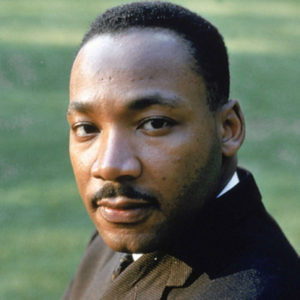 I became a young adult in the era of Martin Luther King’s marches for peace. As an African American from the North, my personal experience with racism did not compare to the harshness of the South, but it did take an emotional toll. Although aware of discrimination in the North, I bought into the myth that segregation existed only in the South: probably because that’s where it was supported openly by laws and law enforcement. I wanted desperately to ride the southbound bus and join Dr. King, but my mother, widowed when I was 17, responded with, “I didn’t work hard to raise you and put you through college to have you killed in the South.” So, reluctantly, I remained at home, reaping the benefits of Dr. King’s sacrifice.
I became a young adult in the era of Martin Luther King’s marches for peace. As an African American from the North, my personal experience with racism did not compare to the harshness of the South, but it did take an emotional toll. Although aware of discrimination in the North, I bought into the myth that segregation existed only in the South: probably because that’s where it was supported openly by laws and law enforcement. I wanted desperately to ride the southbound bus and join Dr. King, but my mother, widowed when I was 17, responded with, “I didn’t work hard to raise you and put you through college to have you killed in the South.” So, reluctantly, I remained at home, reaping the benefits of Dr. King’s sacrifice.
As we approach the national holiday commemorating the birth of Dr. Martin Luther King, I pause to reflect on his message and course of action over fifty years ago, and its relevance to America today.
Dr King, in concert with the media, fathered the Civil Rights Movement. Without the media, the brutality occurring in the South would not have entered living rooms across the country on the television airways, awakening a nationwide conscience, and jarring the federal government out of its states’ rights complacency into direct intervention. Because of the momentum that he started, and that was continued by other leaders, the lives of African Americans were significantly changed by the desegregation of schools, public places, and housing. Along with the Voting Rights Act, discriminatory voter registration practices were dissolved. Those of us living in this era of history were overjoyed, relieved, and unburdened, with the feeling that our lives were changed forever, the expectation that the nation would continue to move forward in our behalf
2016 emerged. Police brutality, which lay dormant, rose to pubic awareness, this time through Social Media, thanks to the pervasive use of the smart phone. As certain parts of the Voting Right Act ran their course, gerrymandering, new rules for voter identification, and decreased accessibility to poling places were reintroduced in parts of the South, designed to keep Blacks, especially poor Blacks, from voting.
As we slide into 2017 from the backsliding of 2016, concern for the future of minority Americans has resurfaced where least expected. What would Dr. King think to see that Steve Banyon, a known racist with ties to the white supremacist “alt-right” movement, is chosen to be Senior Advisor to the President of the United States. How would Dr. King react if he were to learn that today’s candidate for Attorney General, the man who will oversee the prosecution of hate crimes, is Jeff Sessions, who, because of his raciest rhetoric, failed to be confirmed as a federal judge.
This backsliding momentum gives pause to revisit Dr. King’s philosophy of a peaceful response to injustice. Dr. King would not condone rioting, looting, or any other form of violent response. In his support of passive resistance, his was not a weak passivity; it was coupled with the strength of moral resistance; a strength that spoke to the conscience of America
This is a time for vigilance for all people of minority status in America. We must not respond with aggression or militancy born of hostility. But when faced with injustice, we must heed the call to action and actively resurrect the philosophy and strategies of Dr. Martin Luther King Jr.
The spirit of Dr. King was brought to mind in the recent words of First Lady Michelle Obama, “You cannot take your freedom for granted. Like generations before you, you have to do your part to preserve and protect those freedoms.”
*******
Love, Peace and Unity for the Holiday
Once again, our country is challenged to counteract divisiveness with love, peace and unity. In this season, we have the opportunity to reaffirm our country’s creed of life, liberty and the pursuit of happiness for all who live here.
America experienced an inordinate amount of rancor, dividing along political, racial, economic, and gender lines in the post-election days leading up to Thanksgiving. Some of those feelings were softened, as people sat around the Thanksgiving table and recounted their many blessings. Hopefully, we can continue to soften as we reflect upon the meaning of our holiday season with peace on earth, good will toward all. .
A house divided against itself cannot stand.
We are fortunate to reside in a land where we are guaranteed the right to freedom of speech. But we are also a civilized nation, and our expression of this right should reflect our civility, especially in areas of disagreement.
Free will is both a blessing and a curse, so there will always be differences of opinion. Dissension is often grounded in self-interest, but there is a difference between enlightened self interest and the selfishness that dishonors the rights of others. How nice it would be if we could see the world from our opponent’s viewpoint, glean a modicum of understanding, and reach a state of good will, replacing hatred born of fear with consensus born of understanding.
One way I can approach this season, in a spirit of love and inclusion, is to place myself in the minds and hearts of those whose beliefs are different or even opposite of mine. I can attempt to see the world from their perspective. I can realize that when they look at me, my viewpoint may be strange and alien. When I disagree, it will be with respect; hatred has no place in the equation. I don’t pretend it’s always easy, but with empathy and compassion, I shall strive to find common ground where we can move forward together for the benefit of all.
At our highest level, there is no us versus them; there is only us, one human family. In this worldwide human family, we are created with differences. But at the same time, we are urged to love one another in the spirit of peace on earth, good will toward all.
As we near the end of 2016, I invite you to join me in rededicating ourselves to achieve love, peace and unity in this holy season.
*******
My Litany of Thanksgiving With Compassion
I am thankful for my beautiful home overlooking picturesque woodlands . . .
yet my heart goes out to those victims of Hurricane Matthew who no longer have a home at all.
I am thankful for my children and grandchildren . . .
yet I grieve with the mother who walks behind the casket of a son or daughter shot down on the streets of America, or on the battlefield of a foreign land.
I am thankful for my recovery from cancer allowing me to dance and play and exude life as before. . .
yet I feel the pain of those still suffering, perhaps with their second or third round of chemo, or even worse, having lost their battle.
I am thankful for my Social Security and pension . . .
yet I worry for those who fall below the living wage, and are unlikely to amass the funds to relax into retirement.
I am thankful for my passion for writing gifted to me later in life . . .
yet I am saddened for those who have ceased to grow, but sit zoned out before the TV in a state of boredom.
I am thankful for my diverse community of friends . . .
yet my heart aches for those who are lonely or outcast.
I am thankful for my beautiful surroundings: sunshine, small town, waters of the bay and gulf . . .
yet my heart is heavy for those trying to survive in the cavernous depths of rat-infested slums with no hope of escape.
I am thankful for my Faith which sees me through the hard times that occasionally interrupt the joyous times . . .
yet I anguish for those who feel defeated and hopeless.
I rejoice and give thanks for my many blessings…
yet as I look upon those who suffer, I strive to offer more than just my prayers and a loving heart filled with compassion.
*******
2016 has been marked with an inordinate amount of discord in the arenas of politics, race relations, and criminal justice.
Long before it hit the media at large, the Black community faced, on a daily basis, the disproportionate targeting of Black men by the police; and with it the cover ups by the blue code of silence.
When I grew up in the North, discrimination was viewed as a Southern phenomenon. There were no lynchings or Jim Crow laws, so the North held itself blameless. But institutional racism existed, and is still an only partially resolved disgrace.
Equal justice before the law has been both an American ideal and an American myth. Statistics show that Blacks are arrested more frequently than their White counterparts for committing the same minor crimes.

Today, the atrocities of murder by cop are being recorded on body cams and bystander smart phones. What was hidden is now being exposed. And in some cases pent-up rage is erupting in the streets. Yet violence did not originate in the “hood,” but in the slave master’s whip emblazoned over generations in the DNA of Black folk. In fact, conflict is an integral part of American history. After all, our country was not birthed from the British-American Peace Talks, but from the Revolutionary War.
Thankfully, it’s not all bad. Years ago, my husband was pulled over by a White policeman for driving seven miles above the speed limit. When the officer peered into our car, he remarked, “Sir, you have a lovely family and I won’t embarrass you with a ticket in front of your beautiful children, so please drive slower and have a nice day.” Yes, this police officer was respectful and kind. Still, acknowledging the good does not excuse the bad.
“All things work together for good …,” a phrase often repeated in our houses of worship. The unrest that we see today constitutes the surfacing of anger, distrust, hopelessness and prejudice that fester beneath the surface in the minds of both law enforcement and the communities they serve. Once buried, these feelings are now erupting, and their existence can no longer be denied. America is purging, and amidst the disruption is a huge opportunity for honesty, dialogue, level headedness, understanding, and solutions. At its best, healing is the benefit that will arise from discord.
*******
Safety Harbor . . . Preserving the Best of Our Small Town
People move to our small town of Safety Harbor, not because of long term planning, but because they are called to live here. How often do folks say: “I visited, I felt it and I knew I must live here.”
To me, Safety Harbor means a sense of community. People really care. When I walk downtown on Main Street people recognize me and let me know how happy they are to see me. When I am in distress people are quick to come to my assistance, even if they don’t really know me.
My childhood was spent in a small town with all of those characteristics. I knew this was where I had to be when I felt Safety Harbor. For the past five years, I have basked in the arms of this caring, loving community.
With great sadness, I learned that in the name of preserving our beautiful small town, some folk are resorting to hateful tactics that belie the best of what Safety Harbor has to offer. When a new resident cannot sit on her porch without being harassed by strangers; when a long-term resident is subjected to personal attack and name calling, we must stop and reflect. Are we preserving the best of our small town?
We are all created with free will, and surely we all have differences in our self-interest. But are we expressing these differences in the best way when we go on the offensive and rudely attack our neighbors?
Part of our task on earth is to acknowledge differences and create harmony through understanding, civility, and compassion. And just how can we do that? It’s easier than you may think.
Focus on the issues.
Eliminate words of personal attack.
“Do unto others . . .” Imagine how you would feel if your words hateful were directed at you or a family member.
Now present your views with reason, calm and respect.
There is a national and international climate of discord that is poisoning the airways. Safety Harbor is like an oasis, a refuge, protecting us from rancor and hostility. Now, more than ever, we must examine our hearts and our behavior so that we preserve the best of our community. Let Safety Harbor continue to live up to its legacy as a Safe Harbor.
*******
Face of Terrorism: Face of Humanity
In the aftermath of the Orlando massacre, some people find it easy to label the face of terrorism as an Arab face, a Muslim face. But terror has no race, no religion. Terror bears the face of all humanity.
Since 9-11, many have narrowed the definition of terrorism, with the implication that it is something new to this country; inflicted by outsiders. When I was a child, untold numbers of Black men and boys were snatched from their beds in the dead of night and hung from trees to swing to their death. Terrorist acts, not perpetrated by outsiders, but by the solid citizens of the American South—cloaked and hooded. Back then, the face of terrorism was white and Christian.
In today’s world, it would be irrational for me to label and hate every Southern white Christian. Those who label and hate every Muslim in America are equally irrational.
Terrorism is birthed from hatred. It just takes a subtle mind shift to cross the line and turn hatred into a terrorist act. Hatred must be normalized, justified, supported to turn into terrorism. The mindset of the segregated Jim Crow south normalized bigotry and racism, turning the terrorism of lynching into an act supported by many in the community at large. Bad as it was, that terror was localize to a predictable section of the country.
Today we live in a global community enhanced exponentially by the Internet. A lone disgruntled individual can find a sense of community in support of his hatred. The tipping point into an act of terrorism is always lurking with unpredictability.
Hatred is on a continuum from thought to word to deed. You and I will never escalate to committing an act of terror. But each of us bears responsibility for thoughts and words that contribute to the climate in which hatred is germinated, fertilized, and allowed to grow.
As we reflect on our thoughts of people who are different from us, we can monitor the words that come out of our mouths. When speaking of Muslims, Hispanics, LBGTs, Blacks, we can eliminate words of hatred and replace them with words of compassion, understanding and respect.
Let our thoughts and words contribute to unity and peace. Let the face that we show to the world be the face of love.
*******
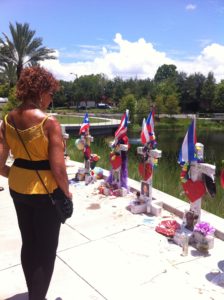 When I was a little girl and someone died, there was a funeral. The grownups were all dressed in black, the children in white or muted pastel. The widow wore a black veil. The air was filled with sadness. There was sniffling, muffled weeping, and an occasional loud outburst of sobs. There was no doubt that this was a sad occasion, and we were there to console and to grieve.
When I was a little girl and someone died, there was a funeral. The grownups were all dressed in black, the children in white or muted pastel. The widow wore a black veil. The air was filled with sadness. There was sniffling, muffled weeping, and an occasional loud outburst of sobs. There was no doubt that this was a sad occasion, and we were there to console and to grieve.
The wake had already occurred, lasting for two days prior to the funeral: 2:00-4:00 in the afternoon, 6:00-8:00 in the evening—to accommodate those who had to work. Appropriate attire for the wake, though not necessarily black, was navy, brown, or muted pastel. A great loss had occurred, and we were there to console one another and grieve.
After these two solemn rituals, the repast followed: a delicious meal in the parish hall, prepared by the church ladies. Only then did the laughter begin as folks shared happy stories about the deceased, or any other topic of conversation they chose. And you felt just a twinge of guilt at the fun you were having as you saw friends and relatives that you hadn’t seen in years. You vowed to keep in touch, but knew in your heart that you wouldn’t see them again . . . not until the next funeral.
These days when some one dies, we jump almost immediately to the celebration. Black, though still required of the family, is softened in patterns mixed with white. The attire of respect has changed. Friends are known to show up to the funeral in bright red. Here in Florida, some even arrive in jeans or shorts. The wake is never more than a day; more likely just an hour or two before the funeral.
Don’t get me wrong. The Celebration of Life is a beautiful event. It allows us to feel relief that our loved one is no longer suffering. That they are in heaven with the Creator and the host of family and friends who went before them. We chronicle the joy of their accomplishments and of our happy times together. For that, we rejoice.
I know that when it’s my turn to go, I want folks looking at happy pictures of me, reminiscing about the good times we had. And when it’s time for the repast, wine will be served. But I’d also like to look down from heaven and see that there’s someone who is feeling the pain of losing me and acknowledging that pain with a simple tear, or gut wrenching sobs.
Let us not hurry past the reality that a great loss has occurred. That death has left sadness in its path. That the rush to joy may be burying the sadness too quickly. In the leap from death to celebration, let us not forget to honor the grief.
*******
Remembering Orlando’s fallen with sadness and love
*******
From Slavery to Freedom to Safety Harbor
As he stepped onto the stage clad in blue majestic African garb, his presence commanded the room, his voice reverberated to every corner; his strength and courage transcended his ongoing six year bout with cancer. Frederick Hayes had come home, proclaiming his family’s history from slavery to freedom, to Safety Harbor.
Moments earlier, in the West African ceremony of libation, his sister Jacqueline Hayes led the audience in the invocation of those who had gone before, as people throughout the room called out the names of their ancestors to be present on the evening of March 18th in the sanctuary of the First Presbyterian Church of Safety Harbor.
For the next hour, we journeyed through the family’s trials and triumphs, guided by the narration of Jacqueline Hayes. This evening of song, dance and spoken word entertained us, educated us, and touched our hearts. Frederick brought with him years of experience as a professional dancer, having shared the stage with such greats a Ruby Dee and Geoffrey Holder. He is well known for having performed twenty years in the Boston company of The Black Nativity.
We learned of Great Grandfather Alex Smith, an African brought to Georgia in the chains of slavery. Fleeing to Florida, as a runaway, Alex lived among the Seminole Tribe until the Emancipation Proclamation, when he returned to his family in Georgia. .
Next we heard of Grandfather Charlie Smith, who left Georgia after hearing of the opportunities in the thriving town of Safety Harbor, Florida. Through a connection with the McMullen family, Charlie found both employment and a place to live; becoming Safety Harbor’s first Black landowner.
We became aware of a window of history rarely spoken of in our town. African American Harborites were shooed off the sidewalks and forced to walk in the road as they headed down Main Street. Charlie’s daughters Ruth and Goldie were the first to successfully challenge this practice, as they strode down the sidewalk of Main Street. In addition, Grandfather Charlie, as he went about his janitorial duties in a local meeting hall, bore silent witness to plots against Blacks, conjured up by those who, in public, hid behind white sheets and hoods.
We learned more of Frederick’s mother, Ruth, a college graduate and beauty shop owner, who married Alfred Hayes of Tarpon Springs. Ruth Smith Hayes, relocated to New York, and subsequently to Boston, where Frederick, Jacqueline and their three siblings were born. When all of her children were grown, Ruth returned to Safety Harbor.
Now the family has come full circle in Safety Harbor, as Frederick came to tend to his ailing mother in 2009. Jacqueline followed in 2014.
On this special evening, we felt the impact of the family’s history not only through the narration, but through dance, song, and poetry. The performance ran the gamut of emotions; joy, sorrow, indignation, triumph, interlaced with bits of humor. Joined by a talented local six year-old, Frederick brought the story to life through the medium of African dance. Stepping out of her role as narrator, Jacqueline enhanced the legacy with a dance of her own. And Frederick’s powerful deep voice was merged with three other vocalists filling the room with songs of their heritage. The evening ended with a heartfelt standing ovation.
By popular demand, Frederick will repeat this program at a later date, so that more of our townspeople can become aware of this important window into Safety Harbor’s African American history. Frederick can be contacted at (727) 712-1068 to deliver his performance to your group or organization. Donations from the evening went to ease the burden of medical bills incurred by his cancer treatment.
#####
The Obama Presidency: Black History in the Making

History traditionally pays tribute to heroes of the past, but this Black History month I honor President Barack Obama, a symbol of Black History in the Making. When we think of Black history. segregation, Martin Luther King, and the civil rights movement come to mind. But in reality, today’s events are tomorrow’s history.
As I listened to Presidant Obama’s final State of the Union message in January of 2016, I was reminded of his campaign messages throughout 2008 and his inauguration speech of 2009. He was the candidate of hope, a promise of change. His recent State of the Union address put forth his vision for the future of America. Obama is a statesman, an idealist, a visionary. Somewhere between hope and vision is the reality of the presidency. That reality is one of politics, and politics is not Obama’s strong suit.
His vision for bipartisan collaboration was thwarted at every turn. As I see it, the worst thing that happened to limit Obama’s success was the death of Senator Ted Kennedy. Teddy was a consummate politician; he came from a family of politicians, he knew how to play the game and make things happen. Obama’s idealism coupled with Teddy’s political acumen were the perfect combination. But half of the equation was removed in 2009.
Nevertheless, history books will not be concerned with politics; history books will record his accomplishments, which are many:
- Ending the war in Iraq
- Ridding the world of Osama Bin Laden
- Healthcare for all Americans
- Repealing the military’s “Don’t Ask, Don’t Tell”
- Turning around the US auto industry
- Acknowledging the marital rights of America’s gay population
- Significantly reducing the Bush deficit
- Acclaimed as one of the most highly regarded U.S. presidents in the eyes of the international community
- The list goes on. . .
And let us not forget the First Family. The Obamas exemplify the highest standard of American family values. They defy racist stereotypes as they reflect the strength and cohesion of Black families across the nation. Michelle Obama represents the best of American womanhood: intelligence, beauty and graciousness. A double Ivy League graduate, she gave up the promise of a brilliant law career to serve as First Lady. Feisty in the early days of her husband’s campaign, she softened the sharp edges of her words and stepped gracefully into her accepted role. Within the boundaries of charm and grace, she remained her own person. Michelle defied the jealous old biddies who criticized her for displaying her beautifully toned arms and redefined appropriate first lady apparel.

Not to go unmentioned are the Obama children, Sasha and Malia. Throughout the first campaign and the 2009 inauguration, they were in the public eye. But once in the White House their parents erected a protective shield keeping them out of the spotlight.
White American children have always been able to say that with the American dream, they can aspire to become President of the United States. Now, with the Obama presidency, children of color can share this aspiration. And they have the image of Black children already living in the White House.
Along with many African Americans I have repeated the mantra, Black history is American history. Well, the Obama presidency has proven this, for there are not enough registered Black folk in the U.S. to have elected him on our own. White America, Hispanic America, Asian America joined with Black America to elect this president.
In the heat of today’s politics, President Obama’s fan base and his critics will queue up along political lines. But history books aren’t concerned with the petty bickering of politics; history books focus on a person’s character and accomplishments or lack thereof. Even if the history books fail to chronicle his achievements, even if the historians choose to diminish his impact, he will go down in history with at least one entry:
Barack Obama was the first Black President of the United States of America.
#####
We Can End World Hunger
“I don’t want anything, I have all I need.” How many fifteen year-olds do you know who would say this? Yet that was my granddaughter’s repeated response when loving relatives and friends asked, “What do you want for Christmas?”
Thinking back on my own teen years, I had a ten item list of potential gifts stored in my head and ready to recite upon the asking. It never occurred that I had all I needed; I was focused on what I wanted. Just how many of us reach adulthood, unable to separate our wants from our needs?
It was 47 degrees out and the car heater wouldn’t kick in fast enough, so I turned on the seat warmer and within seconds, had a warm toasty body. Who needs a seat warmer in Florida?
My friend just remodeled his kitchen and demonstrated with pride the cabinet doors and drawers. “You don’t have to hold on to close them, they shut themselves with just a tap of the fingers.” Who needs self-closing cabinet doors?
And how many women do you know who groan, “My closet is such a mess, there’s nowhere to put anything. I have eight outfits with the tags still on.” Who needs eight unworn outfits?
We Westerners love the newest, the trendiest, the most expensive grownup toys. They feed our indulgent desires and give us something to show off with pride. But how many of us would take my fifteen year-old granddaughter’s response: “I don’t want anything, I have all I need.”
Perhaps it’s time to shift our focus away from our wants to other people’s actual needs. Whenever our eyes crave another unnecessary indulgence, instead of reaching for our credit card, why not reach for our checkbook and donate the sticker price to a reputable organization to feed the hungry.
We can feed one child, one family, one village at a time by declaring
“I have all I need … I offer you the gift of life.”
Thank you, Safety Harbor. This is the first thought that comes to mind this Thanksgiving Season as I reflect on reasons to be grateful.
You are a small town; a real community so like the town of my childhood. A place where I can stroll down Main Street at any given moment and run into a friend, and where the shopkeepers know me by name. And for being a place, where I can walk through the streets well after dusk knowing that I am safe and secure.
The town is a center of creativity that encourages a writing talent that emerged so late into my adulthood. And you provide this platform to share my thoughts. A special thanks to those of you who stop me on the street, with the words, “You’re Amy, I follow your blog.” Where else could a woman of a certain age have a following?
Whether Journey Dancing at the Gazebo or Flash Mobbing in the middle of Main Street, Safety Harbor gives me an opportunity for joyful, uninhibited self expression that keeps my childhood passion for dance alive.
In Safety Harbor, over half of my friends are the age of my daughters, yet we interact as peers. This is a true multi-generational community, where people of all ages get along with respect, and by knowing each other are enriched.
Thank you for your quirkiness, your artsiness.
For being a place where I can recite  serious prose at Open Mic, then shift venues and be a blond Tina Turner to a white Ike, and no one thinks that’s strange.
serious prose at Open Mic, then shift venues and be a blond Tina Turner to a white Ike, and no one thinks that’s strange.
For the restaurants that take time to focus on food which is fresh and organic, supporting a healthy lifestyle. And for the Spa; a social hub, a center of healing.
Thank you, Safety Harbor for your reverence for the creations in nature. From the oak trees, to the parks, to the waterfront, to the sunrise and sunsets, Harborites treasure with awe the creations of nature that enfold.
Most of all, thank you for sustaining me through last year. For nurturing and loving me back to health. This is my tribute of Thanksgiving
#####
See Previous Blogs on Safety Harbor Connect
#####
Understanding Black Lives Matter
I think white folk are getting tired of the Black Lives Matter movement given many of their responses:
-
- White lives matter
-
- Police lives matter
- All lives matter
Of course .those other lives are as important but to counter Black Lives Matter with that retort is dismissive, diminishes the importance of this new movement, and denies a part of American history that has seeped into today’s world:
-
- White lives have always mattered in America.
-
- Police lives have always mattered in America.
- Black lives have always mattered less in America.
The Civil Rights Movement of the 1960s did much to improve the American mindset regarding the value of Black lives: voting rights, educational equality, equal employment opportunities and housing discrimination were addressed. And most noteworthy, the brutal practice of lynching ceased. Mainstream America was lulled into the belief that all is now well for Black folk. Today the focus has shifted to the longstanding, unaddressed, discriminatory behavior of the police.
Black Lives Matter calls for the end of lawlessness by law enforcement.
Police lives have always mattered. We have laws that are enforced when a police officer is mistreated by the criminal element. But the Black Lives Matter movement is highlighting a truth that has long been covered up: law enforcement officers have not only failed to protect the rights and lives of Black Americans, but they have perpetrated brutal crimes against them under the guise of self-defense, and covered their actions with outright lies. The Blue code of silence is only now coming to light with the advent of the
body cam, smart phone videos, and greater press coverage of outlaw lawmen.
Parents of Black boys have an underlying anxiety whenever their sons leave the house. They instruct their boys in self-protective behavior if detained by the police for whatever reason, just or unjust. Don’t argue. Keep both hands in plain sight. Say Sir. Most importantly, don’t run.
Only last week in the nation’s capital, Jason Goolsby. a young Black student, following the rules of his mama’s upbringing, held open the door at an ATM, allowing a White woman pushing a stroller to precede him. And how was he rewarded for his chivalry? She called the cops, who took him down forcibly. And what was the complaint? Robbery fear.
I have observed a great deal of history in my lifetime and I continue to affirm that we are steadily moving toward a more inclusive and just society. Nevertheless, there still exist hidden and unpleasant truths which, like a festering sore, must rise to the surface, be addressed, and corrected. In these instances, Black Lives Matter serves as a voice for change.
#####
I was seated in my car, about to pull out of the Publix parking lot, when I noticed a young man pass by and kick a glass bottle. It immediately smashed into four jagged pieces, all of which landed behind the rear tires of a parked truck. The young man continued on his way. Immediately, another gentleman headed straight toward the broken glass, retrieved it, and when he could not find a trash can, gathered all the pieces into his car and drove away. In all likelihood he saved the truck’s tires from being punctured.
So often we read about, and write about the problematic people in our world. This Harborite inspired me to recall other examples of Harborites at their best and this is what I observed:
I was driving on Bayshore Blvd. heading downtown and noticed an untimely backup of traffic in the distance. As I approached the bottleneck, I saw a young woman in the street. She had exited her car and was bending over to pick up a tortoise creeping across the road. Traffic had stopped in both directions as she carried the tortoise to the grass and safety. No one honked at her; all waited patiently.
Harborites at their best.
Last year at Open Mic, I was reading a gratitude piece about the 15+ people who were helping me with rides, meals, shopping and prayers during my bout with chemo. At the close of the evening a young woman—a complete stranger—came up to me, tearfully put her arms around me and said, “I want to be part of your healing team.”
A Harborite at her best.
One morning on the tennis courts, a teenage boy and girl were playing amazing tennis, but unfortunately they were stuck playing with dead balls. A member of our group walked over to them extending his hand. “You shouldn’t have to play with those dead balls,” and he gave them a brand new unopened can.
Another Harborite at his best.
Many of you read the news reluctantly, or choose not to read it at all, because most of what reporters offer is usually bad news. “Seeing is believing,” they seem to say. But I say if you first believe in the goodness of people, you will see it. So, my dear reader, as you may notice, there’s a comment section below my blog. I invite you to log in and add to the good news by sharing your example of Harborites at their best.
Any single ladies in the house? Well, this is for you. You enter a restaurant, eagerly anticipating the scrumptious meal ahead, and the hostess greets you with the words—“Just one?” As the word Just rings in your ears, you murmur a polite “Yes thank you,” but your enthusiasm is deflated. You follow the hostess past the romantic couples, the families with boisterous children seated at tables for the tables for four, six, even eight. Finally, off to the side, near the kitchen, you reach the table adorned with one unlit candle—your table for one. Just one, that is.
The just question is usually followed by the just look—the slightest hint of disdain—she’s not worthy of a dinner companion. Probably will just order a salad. Probably won’t drink more than one glass of wine. Not much of a tip here. After all, she’s just one. Or the look could be one of pity—poor thing, she has to eat by herself. After all, she’s just one. Just is a synonym for less than, for lack; a word designed to diminish. As you bristle inside, you say to yourself I’m not a Just. In the words of Jesse Jackson, “I AM somebody!”
On occasion, a Just One Guy passes your table. He makes an about face and approaches you saying, “Excuse me, Miss. May I turn this into a table for two?”
In New York, where I come from, a lady dining alone is very commonplace—not at all noteworthy. She is greeted with a smile, “Table for one, Madam?” said with the slightest tilt of the head, a sign of admiration and respect.
Guess what? We women who dine alone are quite content—no, delighted with our own company. We find ourselves interesting, and as we look around the restaurant, we are amazed by our own observations and profound inner thoughts.
We’re no kind of just. We’re all that!
#######
SEE PREVIOUS BLOGS ON SAFETY HARBOR CONNECT
#######
I was admonished for not posting a blog addressing the horrific events in South Carolina. My blogs often deal with difficult topics, but always end in hope and redemption; I saw no redemption in the burning of Black churches as the Confederate flag flew proudly atop the South Carolina State House.
I would not blog my rage: I could not blog about redemption
If we are not safe to worship our God in His house, are we safe anywhere?
The carnage and destruction catapulted me backwards into a state of Black Racial PTSD. I relived the fear and terror of the original church burnings in the 1960’s. I relived the raising of the Confederate flag by the Ku Klux Klan in protest of integration. I relived the snatching of Black youth from their beds in the dead of night to be strung up on trees to swing to their death. I felt the hundred lashes on the backs of my enslaved ancestors. I felt the terror of the African woman torn from her village and tossed into the bowels of the slave ship. With these jumbled thoughts crowding my head, and the wrenching emotions that gripped my heart, I could not blog about redemption.
But then the words of Frederick Hayes at Open Mic jarred me out of my desolation. “Let us hope that the victims of the burnings did not die in vain. Let us hope that their deaths open up a dialogue to put an end to such events.
Therein lies redemption
And I watched as former President Bill Clinton, himself a White, Southern, was moved to tears by the solidarity of Blacks and Whites embracing as the votes were cast to remove the Confederate flag from the South Carolina State House.
Therein lies redemption
By Amy Bryant
Every year, Black History month rolls around in February, and we Black folk chant the mantra: “Every month should be Black History Month.” The speeches resound, the ceremonies are applauded, many of which are attended (and even organized) by White people. March 1st arrives, and the nation returns to a state of complacent ignorance about Black history.
“There is no objective reality, only subjective reality.” Wise words told to me by Dr Mel Goldstein, a professor at Stonybrook University. From my vantage point, it is relevant to the portrayal of objective historical fact. As a child, my Black history was limited to African “savages,”slavery, Sojourner Truth, an abolitionist, and George Washington Carver, who invented countless ways to use the peanut. It wasn’t until I was an adult that I learned that the West Coast of Africa was a mecca of higher mathematics; that in African culture, the concept of Madonna and child of the Deity preceded the Christian Madonna and child. Or even that there existed Black slave holders in America. I was raised in a White Anglo Saxon school system, whose history books and curricula reflected the WASP interpretation of reality.
Much of today’s African American behavior recounted in the news reflects a behavioral psychology with roots in American Black History. Without a clear understanding of the past from the Black perspective, today’s behavior is subject to misinterpretation. But if I, a Black woman, was misinformed, miseducated, how can I expect my White counterpart to truly understand my people?
You can start by observing history in the making through the eyes of media that reflect the Black point of view. Brighthouse Networks channel 146 airs a daily program at 9:00 am, News One Now, hosted by Roland Martin. In a panel format, it presents a variety of highly educated Black experts on all aspects of life, and provides a wealth of information for anyone who truly wishes to grasp the minority culture. Ebony magazine, found in most Black homes and on newsstands across America, features Black people from politics, education, business, entertainment, and just plain everyday living.
You have a Black neighbor down the street, across town, or on your job. I would recommend making friends with at least one. Invite them home to your family. My personal experience has been that those adults who grew up among people of other ethnicities are most likely to be accepting of other races. As children, they saw the reality of the goodness in all people. When experiencing differences face-to-face, children see past the lies of bigotry and carry a more pure vision into their adult lives.
I embrace the mantra: “Every month should be Black History Month.”
******
The Magic of Safety Harbor
By Amy Bryant
I’ve been to Vegas three times and came home with exactly the same money that I wagered, not a penny more. I used to play the lottery; the most I ever won was the price of a ticket, doesn’t count as a win. Actually, I never won anything in my whole life – and that’s a lotta years as some of you know. That is, until I claimed Safety Harbor as my home.
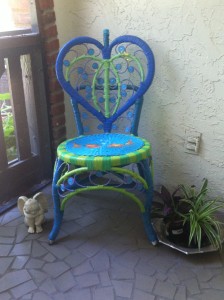 Three weeks ago, I walked into the library chair raffle event, and to the left, high up in the back, was MY chair: the one with the blue heart, some green and a touch of yellow. I already had its spot picked out on my lanai. I put eleven of my twelve tickets into the bag, and prepared to take it home – that is after the two week wait period for the drawing.
Three weeks ago, I walked into the library chair raffle event, and to the left, high up in the back, was MY chair: the one with the blue heart, some green and a touch of yellow. I already had its spot picked out on my lanai. I put eleven of my twelve tickets into the bag, and prepared to take it home – that is after the two week wait period for the drawing.
Friday night the tickets were drawn. I couldn’t believe it: I didn’t win. Looking toward the heavens, I asked the Universe, “What’s up with this? Someone else got my chair.” But two days later the phone rang, “You won, come pick up your chair. The original winner gave bad contact information, we couldn’t reach them, so we tossed the ticket and drew your name.”
This was the sixth of a string of winnings in the past two years, and I owe it all to The Harbor. I never won anything until I started living in Safety Harbor. In our own special way we all know, there’s magic in The Harbor.
So what were the other five winnings?
- A Swedish massage at the Spa for my sexy witch Halloween costume. I didn’t mind being in second place. The top winner was a nine year-old kid and I couldn’t begrudge her the joy of first place.
- A beautifully crafted wire LOVE wall hanging by Kiaralinda at Healing the Harbor.
- A magnificent Dali cocktail table book at a pre-Songfest event.
- The inspirational book Transform Your Life, won at the Amazing Women’s breakfast meeting.
- A $95 mani-pedi at the Safety Harbor Resort and Spa guest appreciation party. Strangely enough, this was the only one I didn’t think up ahead of time.
The other five wins were kinda spooky: I just looked at the prizes, claimed them in my mind, and voila, they were mine. Was this some kind of mental telepathy or the Law of Attraction at work? Maybe, maybe not. I already told you, there’s magic in The Harbor. That’s my story and I’m sticking with it.
*******
By Amy Bryant
The scene opens. There’s a large house in the background, and two White guys creep towards it in the darkness. A sturdy Black man appears, arms crossed, legs firmly planted on the ground, as he booms forth the words, “Don’t even try it . . . I’m ADT.”
My applause to ADT for reversing the stereotype and sending an enormous subliminal message: in this commercial, the Black man is the protector, the Black man is looking after the affluent person’s home. From the well appointed suit he’s wearing, the Black man is earning a good living – and more importantly, an honest living. In this unusual scene, the Black man is the good guy, and the White guys are the bad guys.
Flipping the channels, I come across the beautiful and accomplished Anchor Person Veronica Cintron, delivering the news and standing proudly with her baby bump in full view. Why do I applaud News Channel Nine for this? Because it symbolizes progress in my lifetime – the reversal of limitations formerly placed on women and cultural minorities. The anchor person is a woman, she’s Latina, and her pregnancy, not hidden behind her anchor desk, is out front and camera-worthy.
And one more shout out to News Channel Nine. Although they continue to feed us the typical local news menu of robberies, assaults and murders, they consistently portray the good news in their Everyday Heroes segment. Here, individuals of all cultures, and ages are featured for their unselfish contributions to our local communities, and even worldwide. A grandmother named Nisha Mandini spanned the generations by starting a group for teens to visit people in assisted living residences. She intends for the youth to “build empathy and compassion,” and the elderly to “feel empowered and loved.”
I’m a firm believer in the Law of Attraction: What we focus on is what we create in our lives. It’s easy to criticize the media for its negative focus. That’s the reason many people turn away from the networks. Yes, we need our critics to keep our society on its toes. But when we see the good where we least expect it, we must applaud.
